|
|
Post by nuuumannn on Jun 21, 2016 16:21:02 GMT 12
Hi Guys, I've just returned from a quick trip to Argentina and Uruguay, where, among other things I went in search of aircraft to photograph, so here are some pictures I took. Firstly, the excellent Museo Nacional Aeronautica at Base Aerea Moron, Buenos Aires. Firstly, the Pulqui I designed by Frenchman Emile Dewoitine was something of a disappointment owing to lacklustre performance, but it was the first gas turbine aircraft built in Latin America. 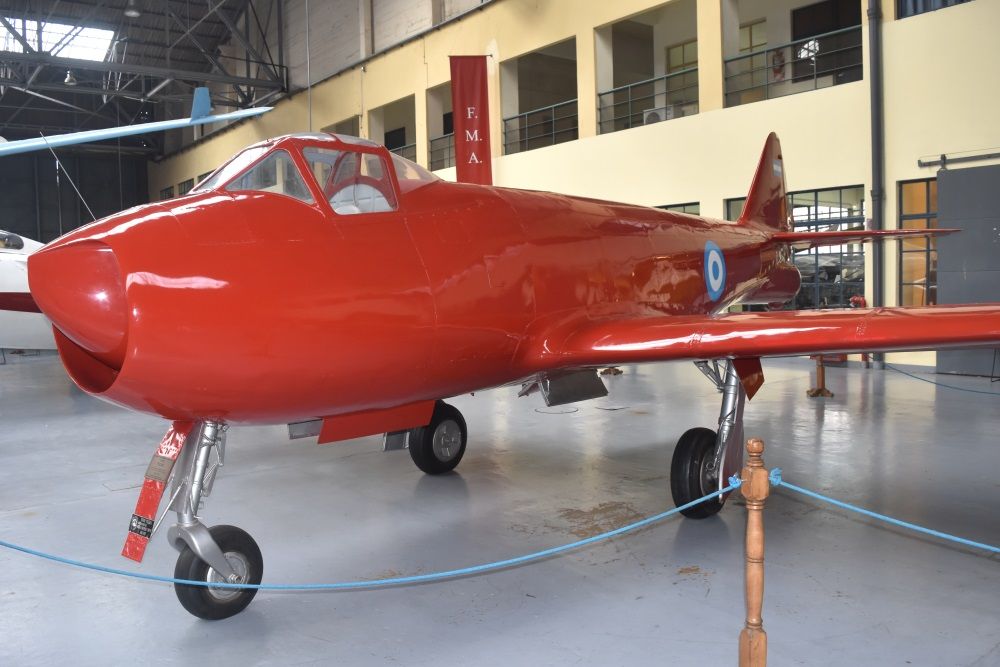 I've done a walkaround of this aircraft here: warbirdswalkaround.wix.com/warbirds#!what-s-new/faqpk Next, its intended successor, the deadly looking Pulqui II, which was designed by none other than Kurt Tank had good performance, powered by a Rolls-Royce Nene, but handling issues and political turmoil within the country sought to stymie production of the aircraft. Eventually the US offered the Fuerza Aerea Argentina F-86 Sabres at a bargain price and the Pulqui II never entered production. 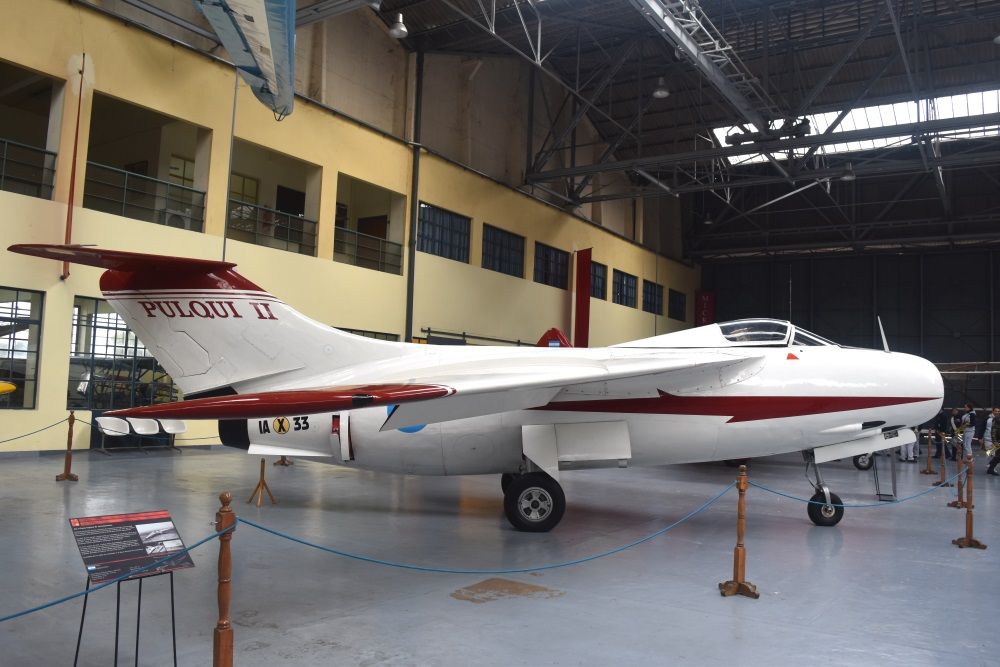 From the handsome to the ridiculous, another Kurt Tank masterpiece was the Huanquero twin engine bomber, reconnaissance, transport trainer. Apparently President Juan Peron often travelled around in the Huanquero, rather than the purpose utilised presidential aircraft. 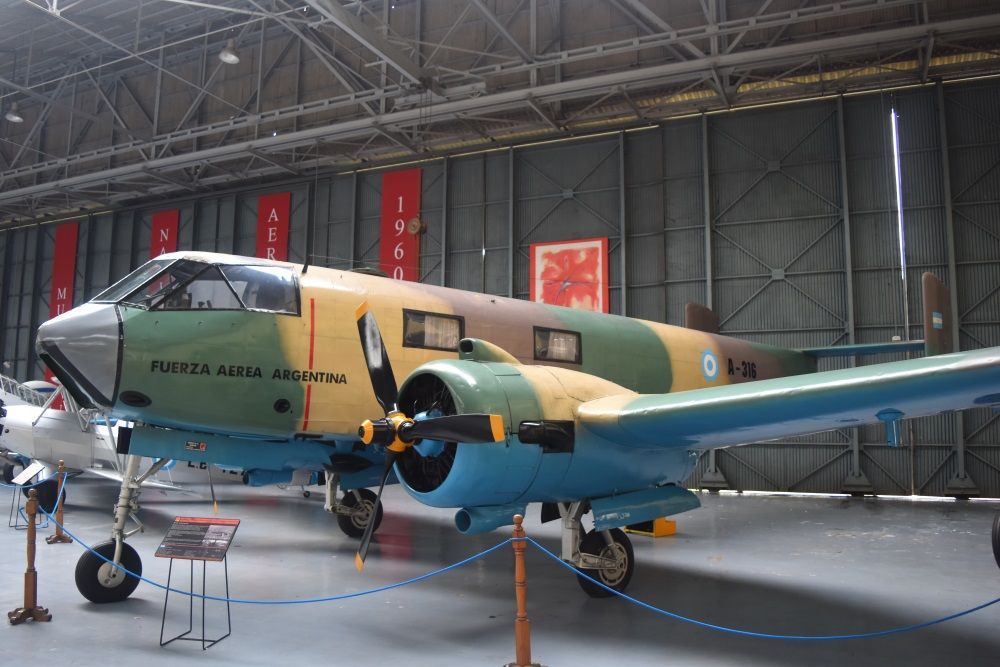 A little known rarity of Argentine design is the Instituto Aerotecnico I.Ae-22 DL, whose design was influenced by the North American NA-16, although the aircraft is entirely indigenous, even the engine, a 450hp I.Ae-16 El Gaucho 9 cylinder radial. 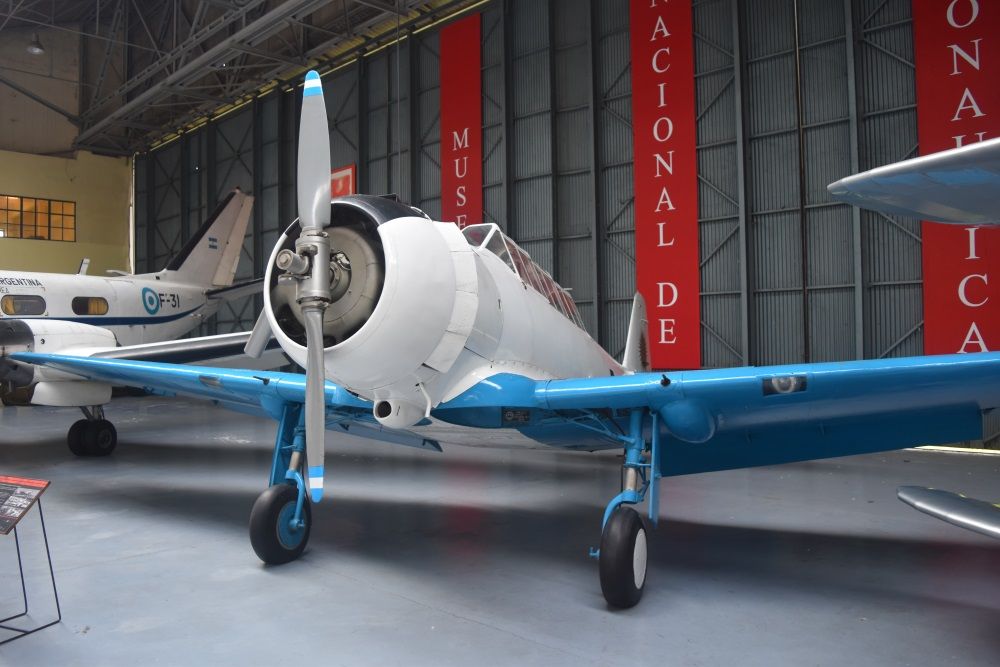 The Guarani II will win no beauty prize, but despite only 32 production examples built, was widely used in Argentina. It was a successor to the Huanquero and was based on the earlier design; the Guarani I bearing considerable resemblance to the piston engine predecessor, but a new empennage was fitted to the Guarani II.  An instantly unmistakeable shape any student of the Luftwaffe will recognise, the Urubu glider was designed by Reimar Horten within the Instituto Aerotecnico. Only five of the two seat gliders were built, this one being the only survivor. 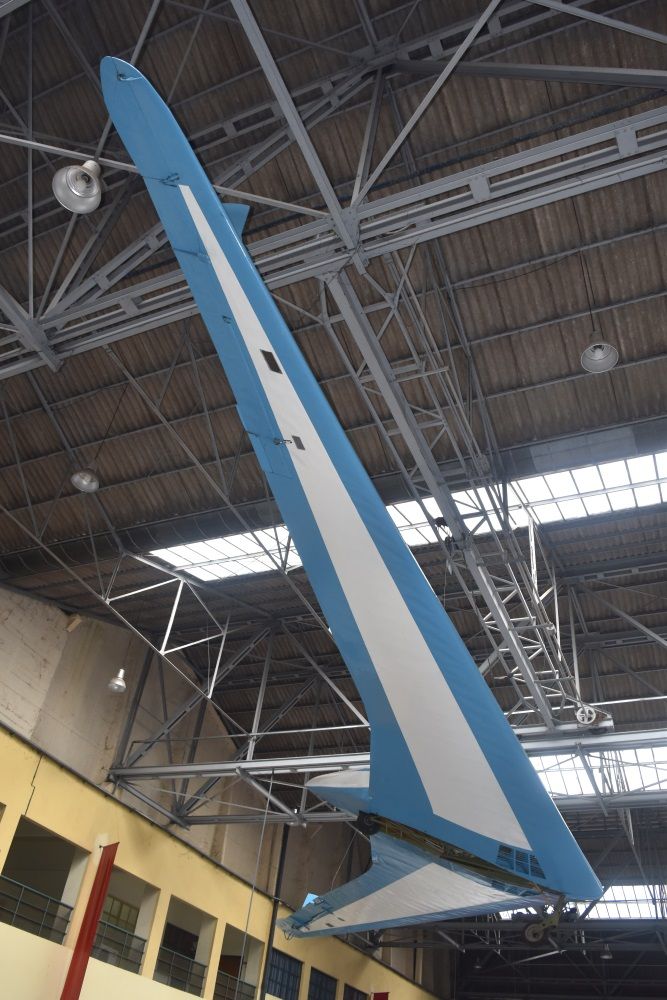 Next the venerable Pucara, the neat twin engined ground attack aircraft that fared rather poorly through no fault of its own, I might add, during the Falklands war of 1982. This one is the very first one built and is almost identical to production examples. 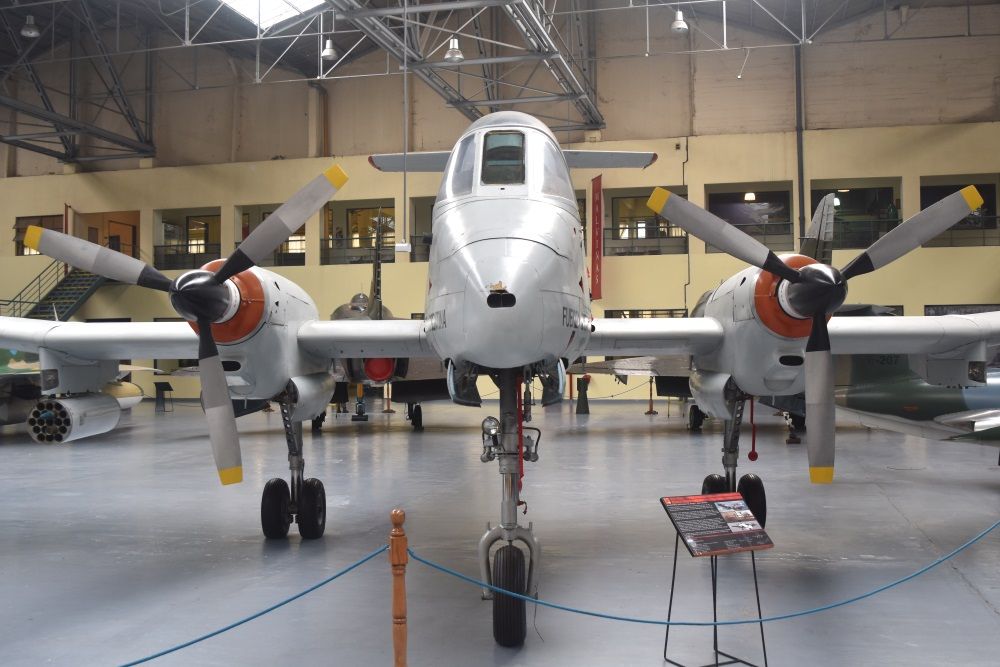 To the Argentine people, the Guerra de Las Malvinas was a turning point in the nation's history; faith in the military Junta dissolved altogether and sovereignty over the islands became a sore point that exists to this day. Therefore it's no wonder that there are monuments to the Malvinas dotted all over Buenos Aires, something that compilers of the likes of the Lonely Planet guides for tourists seem to overlook when expressing national characteristics - a pathological desire to see the islands back in Argentine hands. Within the MNA are five Malvinas combat veterans, all visible in the image below, from right to left, Canberra B-62 B-109, Mirage IIIEA I-011, Dagger A C-432, A-4P C-207 and A-4C C-322. 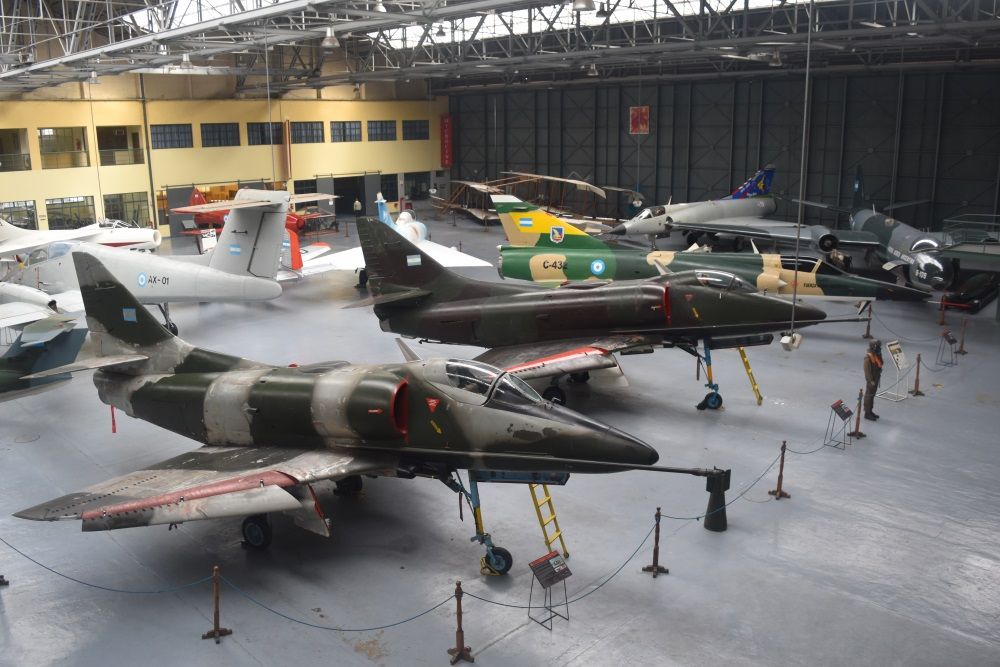 Of the five combat veterans, A-4P C-207 is the most noteworthy, wearing 'kill' markings in the form of ship silhouettes, illustrating attacks made on the British warships HMS Broadsword, Brilliant and Coventry, the last of which was sunk on 25 May 1982 after attack by A-4s including C-207. 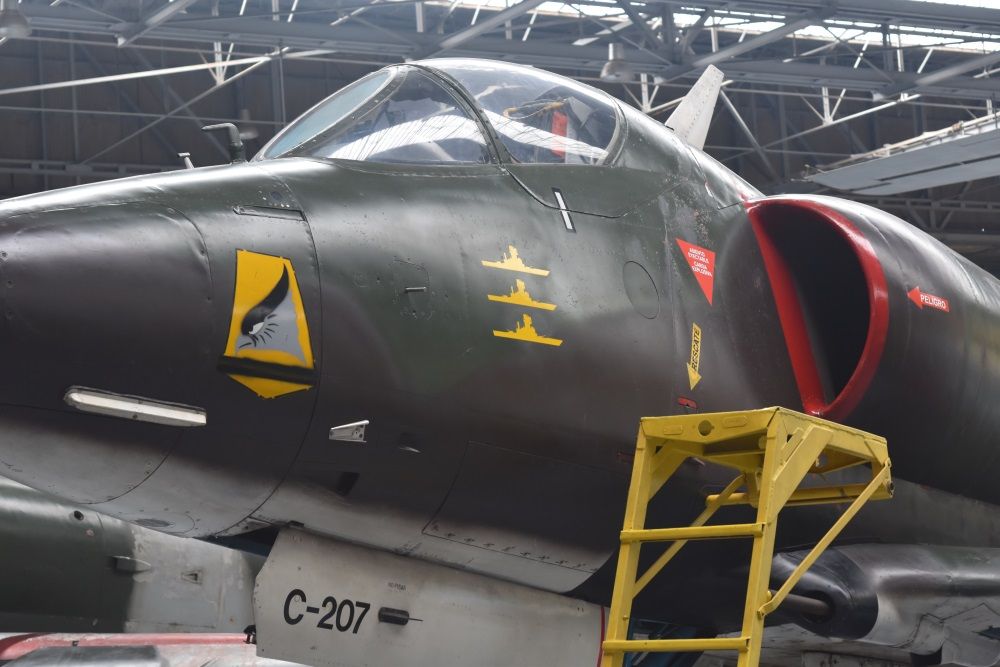 On the last night of the war, Canberra B-62 B-109 was one of two sent to bomb British positions around Mount Kent and thus was the last Argentine aircraft deployed in combat during the war. Sadly, the other Canberra B-108 was shot down by a Sea Dart launched from the destroyer HMS Exeter, the last casualty of the war. 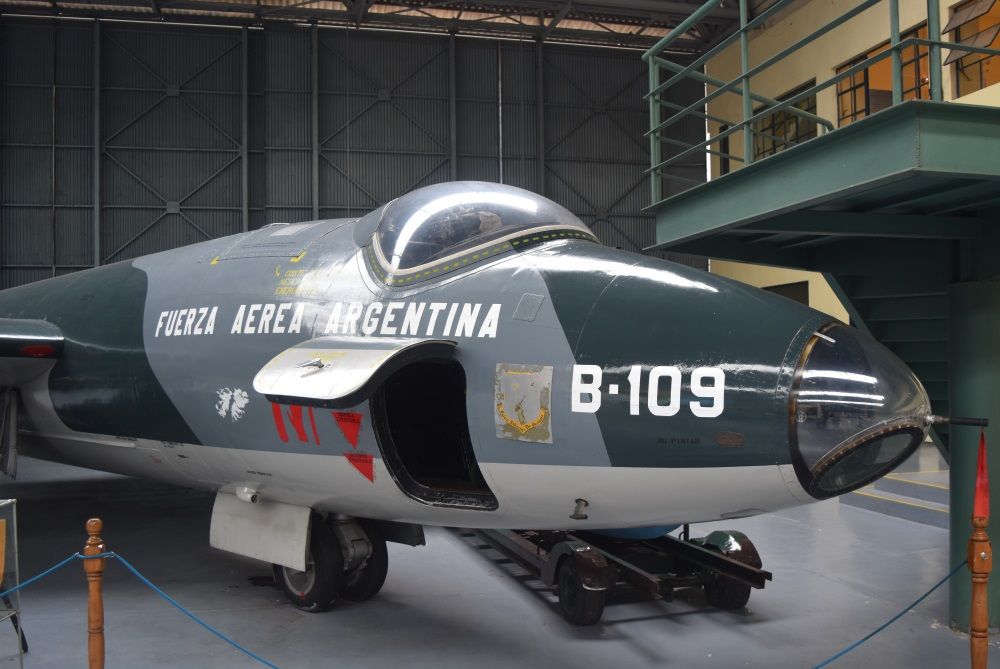 Finally, Argentine Mirage IIIs played only a small role during the war, being hampered by their fuel reserves and being able to spend only 15 minutes over the islands before having to return to the main land. Nevertheless, I-011 carried out air combat sorties over the islands during the war. 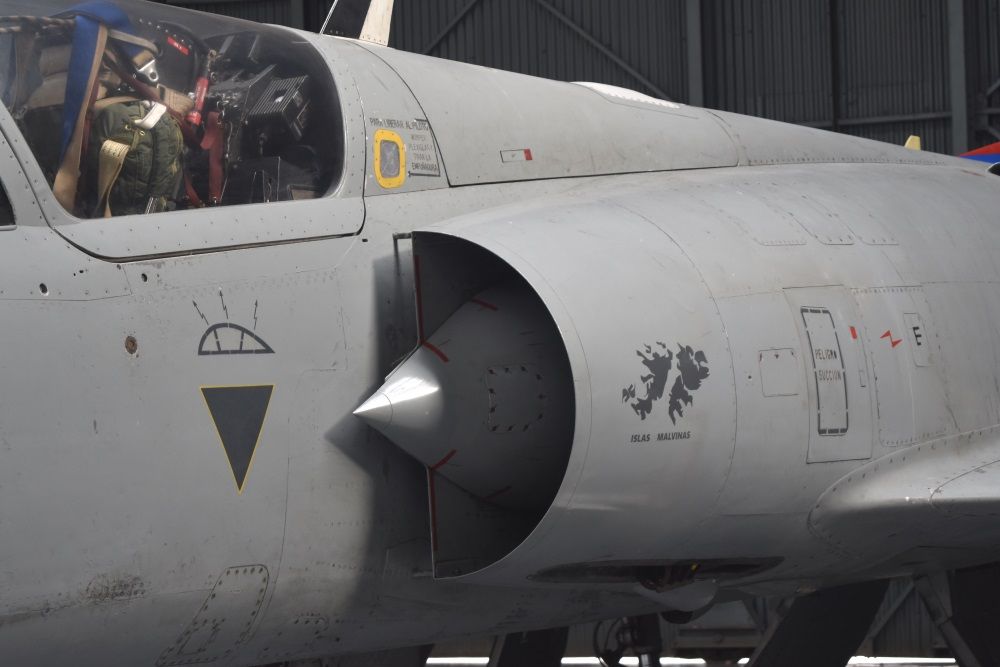 More to come. |
|
|
|
Post by nuuumannn on Jun 21, 2016 17:05:29 GMT 12
More from MNA. It's a little known fact that celebrated French pioneer airman and author Antoine de St Exupery spent time in Argentina flying mail routes set up by the French air postal service. Remarkably, one of his aircraft survives; the last Latecoere 25 left. 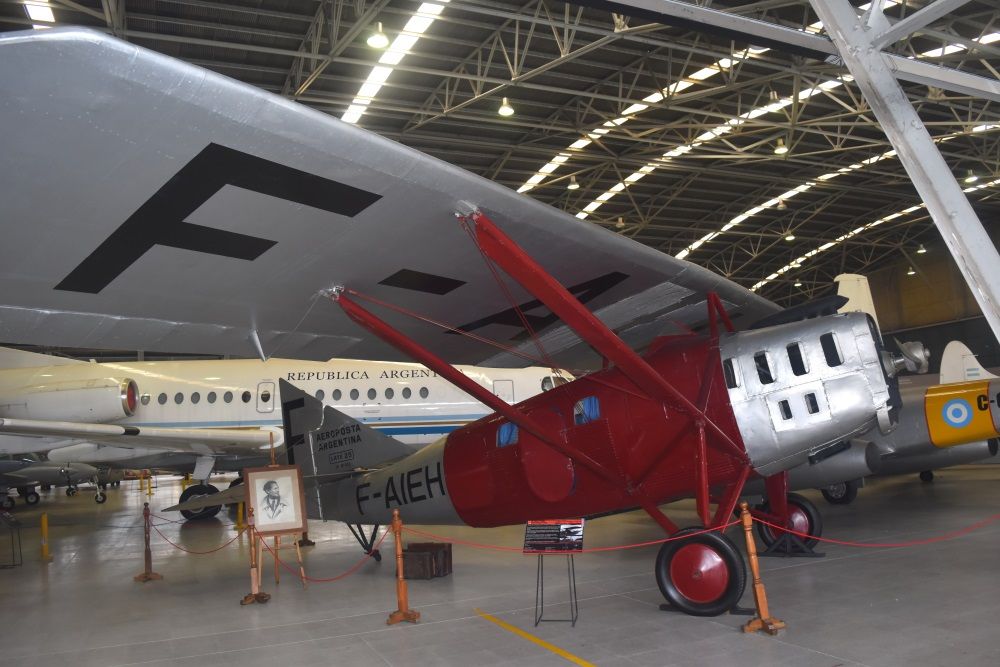 An example of the pretty Fiat G.46 trainer, one of 70 operated by the Fuerza Aerea Argentina. 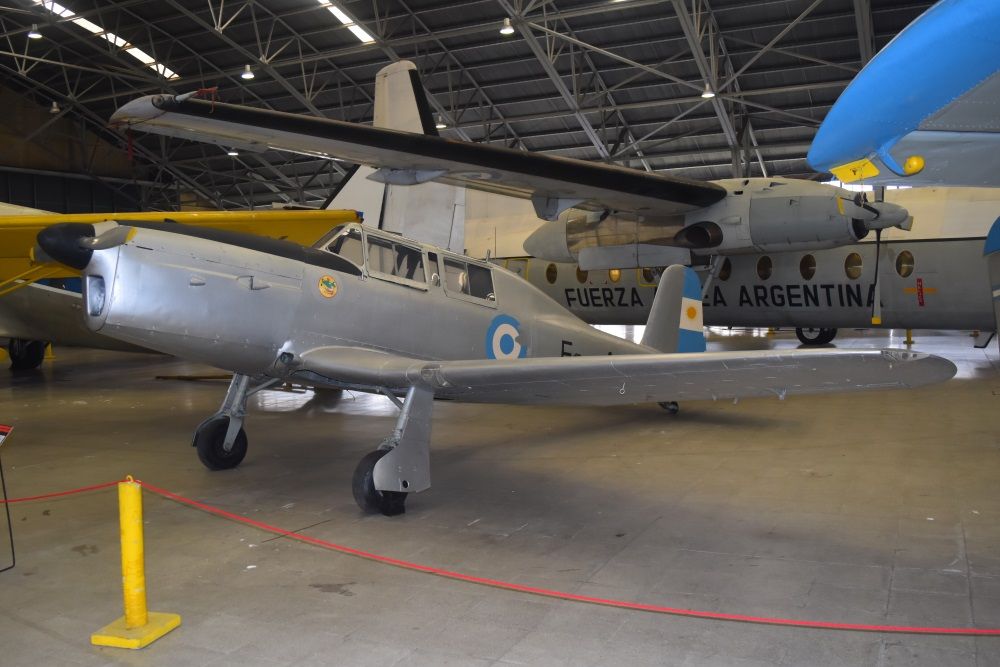 The Max Holste Broussard is known as the French Beaver, such are the characteristics of the type, yet it gets little exposure outside of those nations that operate it, primarily in Africa, South America and Asia, where its rugged nature is best exploited. 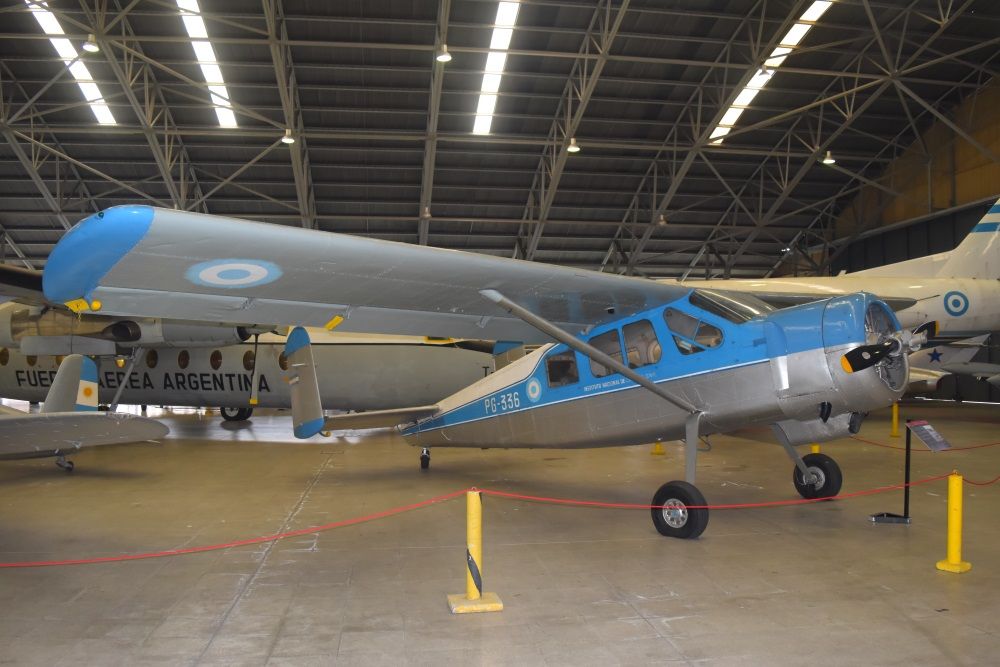 Another French import, the Morane Saulnier MS.502 Criquet, (Locust, not cricket) based on the Fieseler Storch, this one in civilian markings. 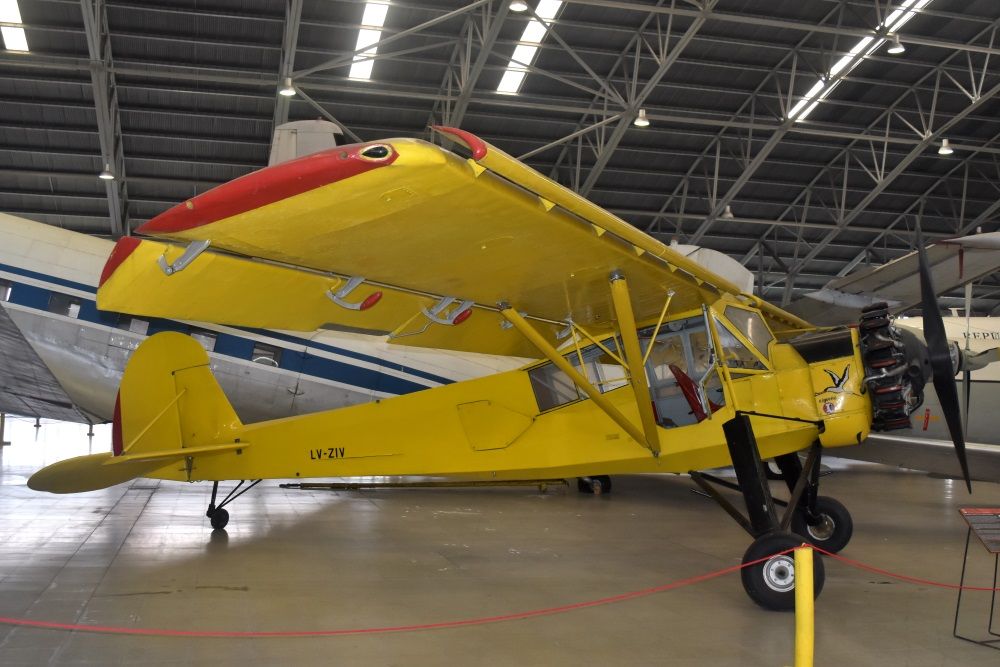 The big S-61R served with the FAA for 18 years before retirement to the museum in 2002. 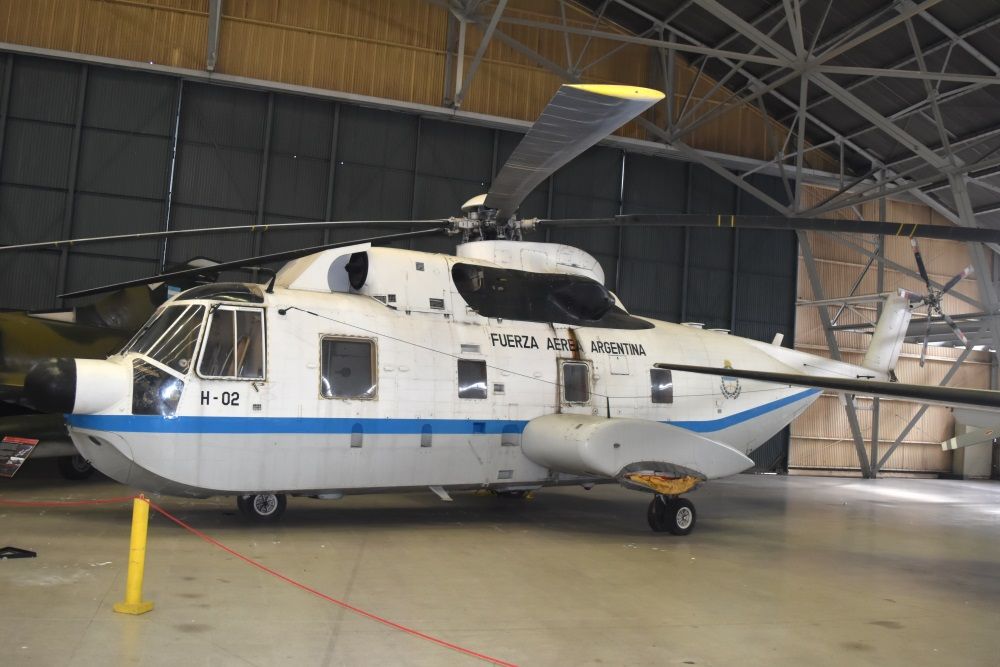 Outside is a line up of aircraft that are desperately in need of shelter, but like most museums, space and resources are at a premium. One of the most significant is Avro Lincoln B-004, one of only three complete and intact examples of Avro's Lancaster successor in the world; another in Argentina and the third at the RAF Museum, Cosford.  Despite being all metal, the Vickers VC.1 Viking, nicknamed The Pig, is a direct descendant of the Wellington bomber, the earliest examples being fitted with geodetic wings and tailplanes. This particular aircraft was used as a presidential transport for a period.  Finally, a big Bristol in need of a good wash. 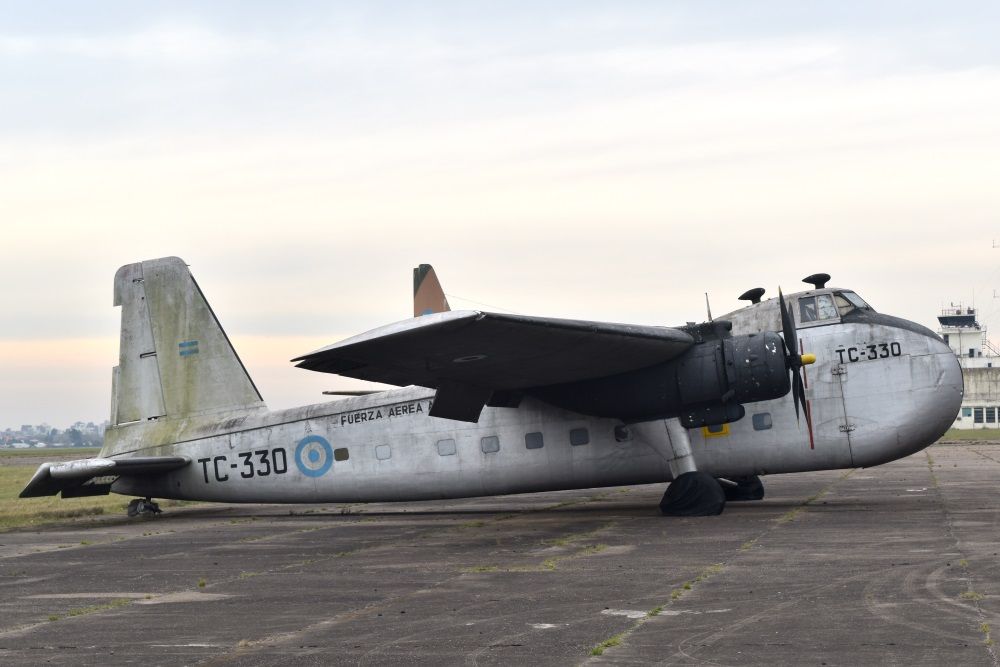 Next, more airframes around Buenos Aires. |
|
|
|
Post by Dave Homewood on Jun 21, 2016 18:08:46 GMT 12
What an interesting collection of mostly very ugly aeroplanes. Thanks for posting Grant.
Did that Skyhawk sink all three RN ships?
|
|
|
|
Post by nuuumannn on Jun 21, 2016 18:19:58 GMT 12
 Thanks Dave, to answer your question, only the Coventry was sunk; Brilliant and Broadsword received damage, but survived the war. I'm hoping to put together a list of Malvinas memorials in Buenos Aires for visitors to the place - there are lots of them and there are reminders of the islands everywhere; billboards on motorways saying Malvinas Argentinas, streets named Crucero General Belgrano, flags for sale with the silhouette of the islands on them, I even saw a small child with a shirt with the Malvinas on it. It's even on their money; the new 50 peso note has the outline of the Malvinas and the Gral Belgrano on it. There's nothing anywhere for visitors to Buenos Aires that covers such a thing and I got into some very interesting discussions with locals about the islands and the war, who seemed both intrigued and pleased with my interest in it. |
|
catcrew
Flight Lieutenant
 
Posts: 72
|
Post by catcrew on Jun 21, 2016 19:34:15 GMT 12
The locals on the Falkland Islands refer to Argentina as east Chile. :-)
|
|
|
|
Post by Dave Homewood on Jun 21, 2016 21:50:01 GMT 12
Hahaha.
|
|
|
|
Post by suthg on Jun 22, 2016 8:14:46 GMT 12
Thanks Grant - there is a story here about the start of their Air Force and the selection of aircraft first sent and given to the Argentinians to start their air force with 100 Gloster Meteors!! Some planes in this picture of 1947 - "Even though additional research is needed to acquire a more conclusive view on these peculiar demonstrations, several air weeks outstand distinctively. The II Air Week (1947) took up a whole block of downtown Buenos Aires 9 de Julio Avenue to exhibit several of the many aircraft types acquired during Juan Perón’s first presidential administration."  Two Gloster Meteors (I-003 and I-006), one Vickers Viking, one DH-104 Dove, one C-47 Skytrain (T-51), one AT-11 Kansan, two G.55 Centauros (Ea-23 and C-09) and a Bristol Freighter (T-34) parked on 9 de Julio Avenue between Sarmiento and Cangallo streets for the II Aeronautical Expo, Buenos Aires, 1947 (photo: Argentine National Archives #321499/B73499). www.gacetaeronautica.com/gaceta/wp-102/?p=363Halfway down this next page (Blog) is some history details relating to their neutrality and generosity through WWII for food and resources to GB... (Also some details on AVM PARK who spent some time in Argentina.) masterbombercraig.wordpress.com/post-war-raf-career/craig-in-argentina/Thanks for the pics Grant |
|
|
|
Post by davidd on Jun 22, 2016 11:13:34 GMT 12
Man, that must be the earliest Bristol Freighter surviving in the world! What with the squared off wingtips, square tailplane and lack of fin fillet, probably equipped with 600 series Hercules engines too. And the flattest and least loved tyres in the world.
David D
|
|
|
|
Post by nuuumannn on Jun 23, 2016 3:26:18 GMT 12
 It's quite odd, despite their desire to reclaim the Malvinas, the Argies have no animosity toward the British at all - they hate the Chileans! - but they have no love for Margaret Thatcher. When I told them the British felt the same way, the ones I talked to were quite surprised. More so when I said that had Argentina not invaded the Falklands then Thatcher wouldn't have gotten back into power for a second term. When they asked why the British didn't like Thatcher, I said "poll tax". Good info Graeme. The Pulqui II was designed to replace the Meteor in Fuerza service, but they got Sabres instead. This picture was taken on the corner of Sarmiento and Av 9 de Julio. 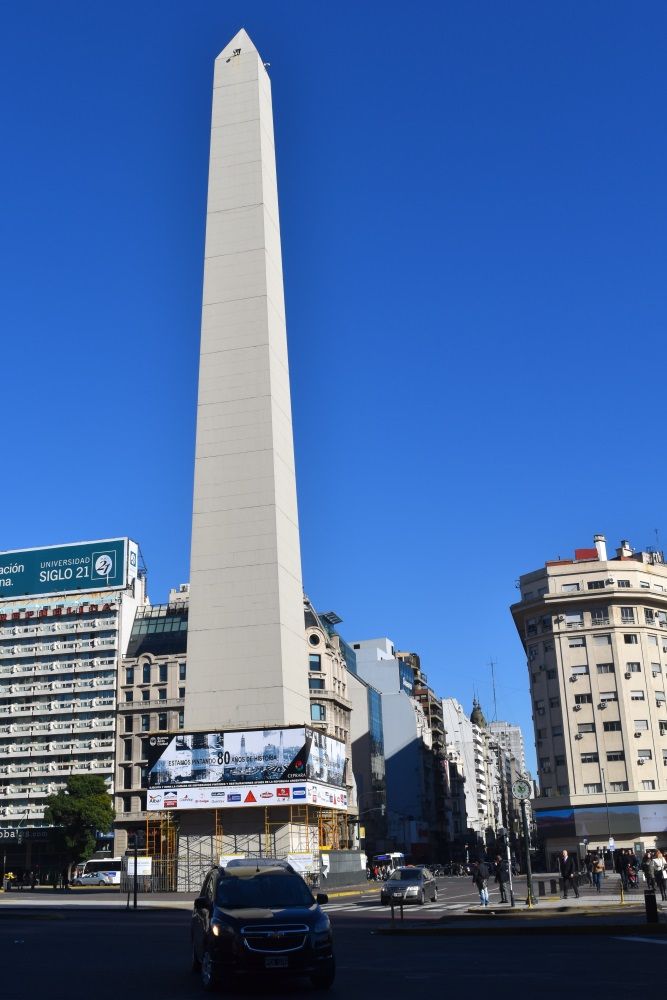 Anyway, here's some more from Argentina and we start with a couple of airframes down town. This A-4Q-on-a-stick is within a compound next to the Edificio Libertad, headquarters of the Armada Argentina. 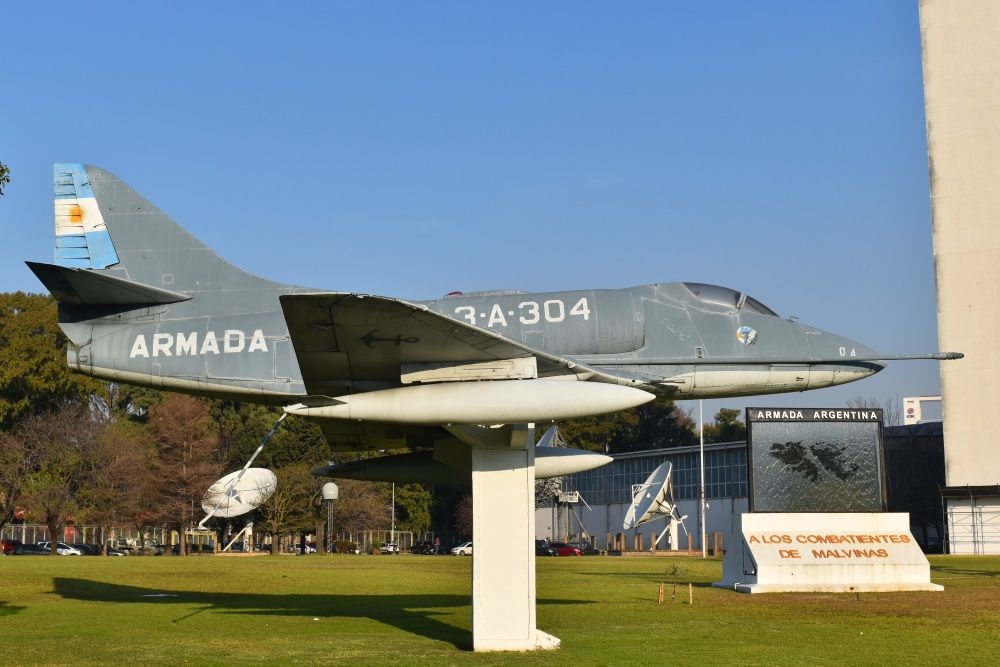 On the other side of the building is this LVTP-7 Amtrac. 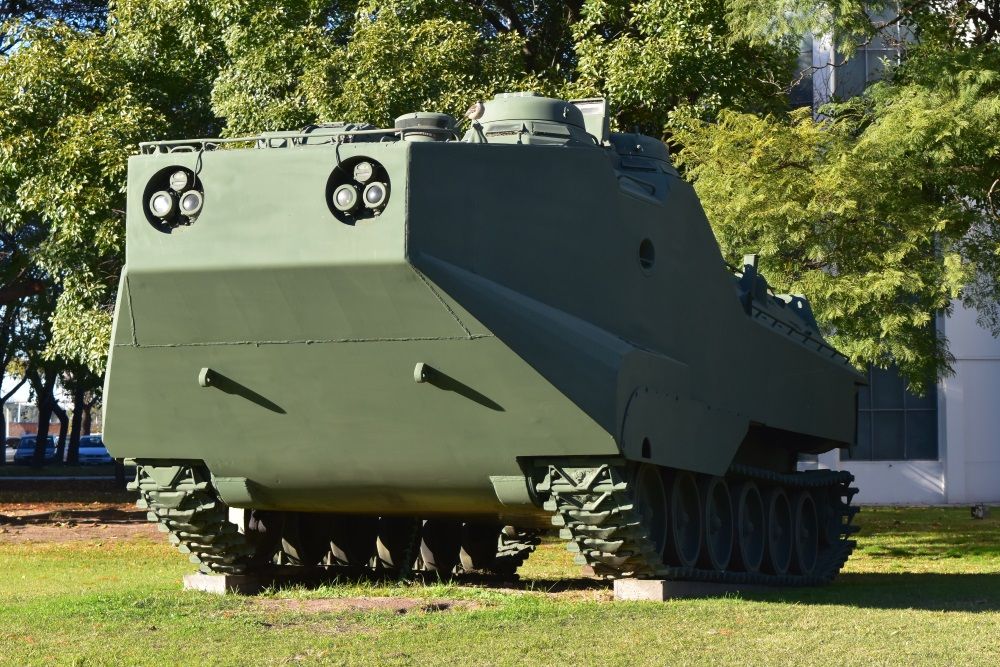 One street away is the Fuerza Aerea Argentina headquarters draped in a commemorative banner... 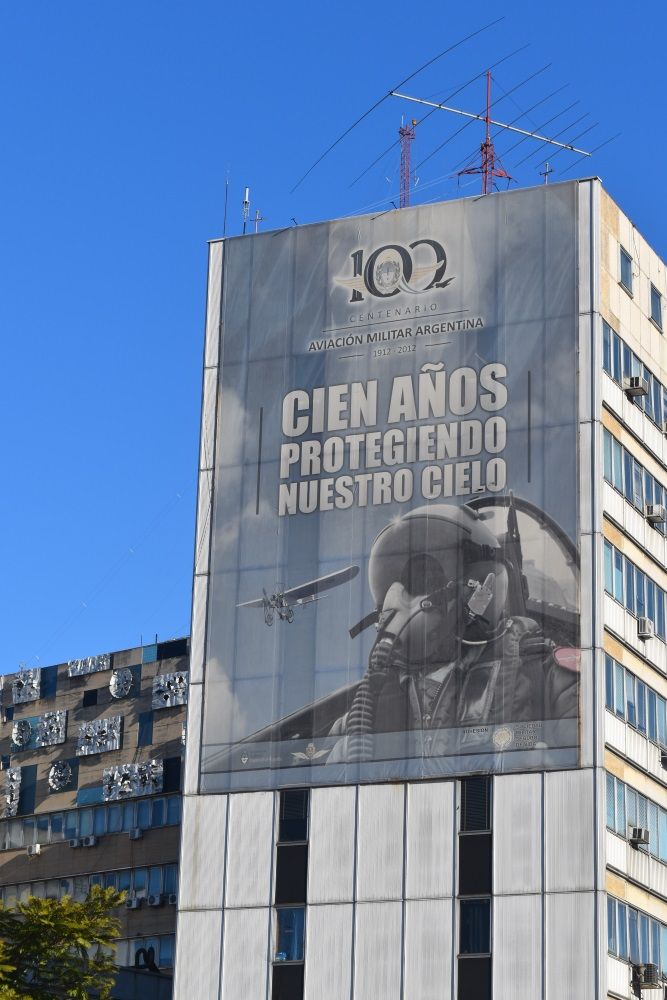 ...with this freshly painted Meatbox F.4-on-a-stick on an island out front. The white building in the background is the aforementioned Edificio Libertad. 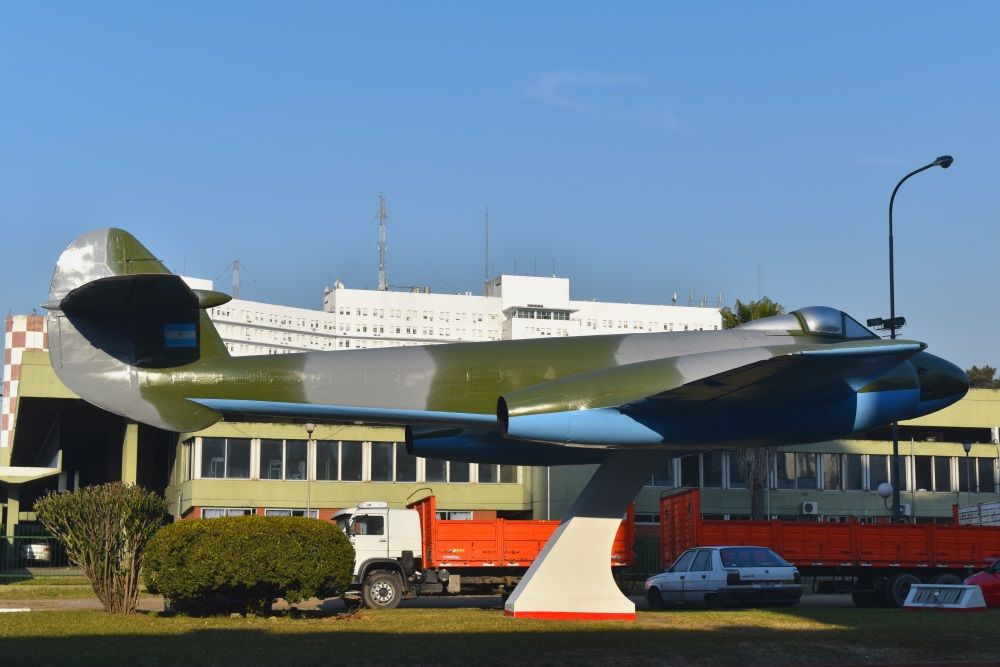 In the heart of the city, a block from the main square, Plaza de Mayo is the Ministry of Defence building with this A-4 Sherman outside; the Argentine army received loads of them and they remained Argentina's main battle tank for many years.  Further out from the city centre in the suburb of Ciudadela within the compound of an army barracks is the excellent Museo Historico de la Ejercito; the Argentine army museum that receives very few visitors, mainly because its so poorly advertised. There, whilst being shown around by two guides, one of whom spoke english, groups of young soldiers came to shake my hand; I felt quite embarrassed by this, but apparently they get very few foreign visitors and I was the first New Zealander any of them had met. One offered me some of Argentina's national drink - mate, a type of tea that's like drinking crushed up leaves and is something of an acquired taste. en.wikipedia.org/wiki/Mate_(beverage)Anyway, There are three airframes at the museum, these two, a rather beat up old Bell 47 Sioux and this UH-1H; both aircraft are empty shells. 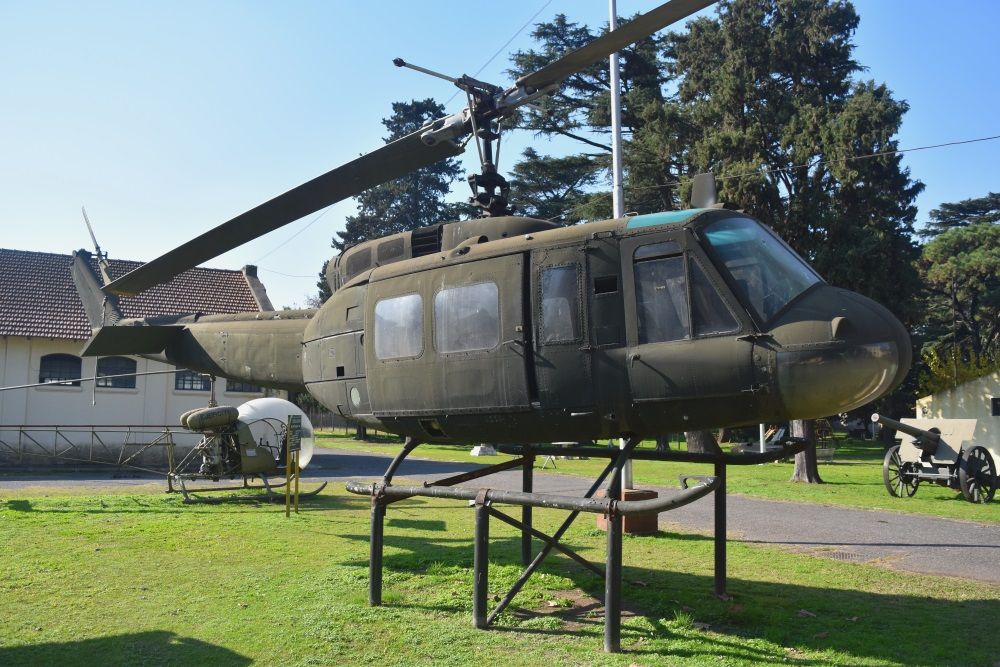 The way by which I found out about this hidden gem is because I found out there was a Grumman OV-1D Mohawk in a suburb in Buenos Aires, so I wanted to track it down, which led me to the museum. 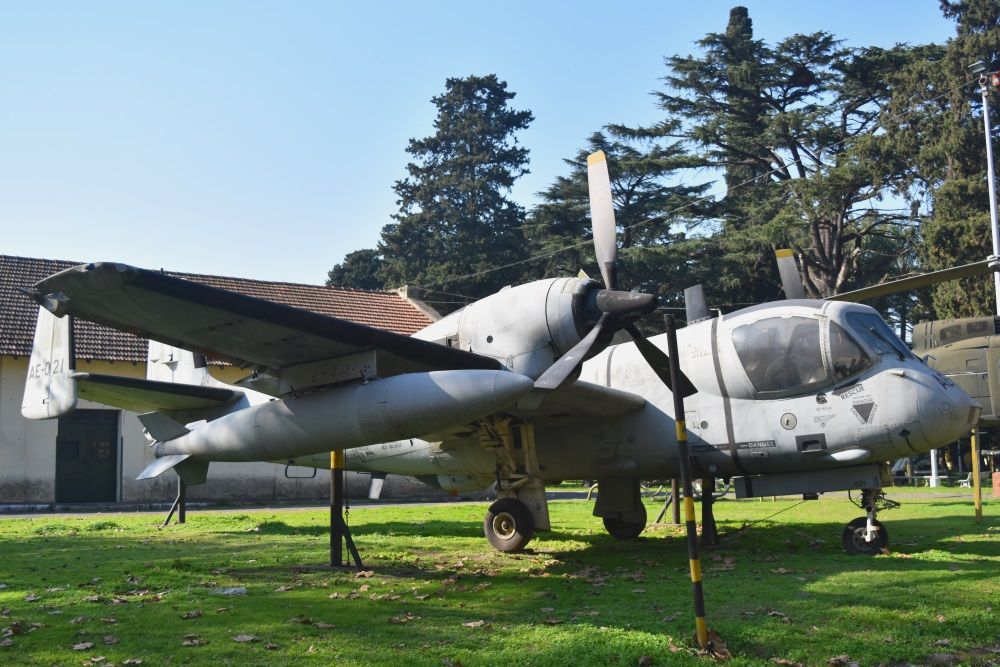 Inside the section of the museum dedicated to the Malvinas are these UH-1H bits recovered from the islands. 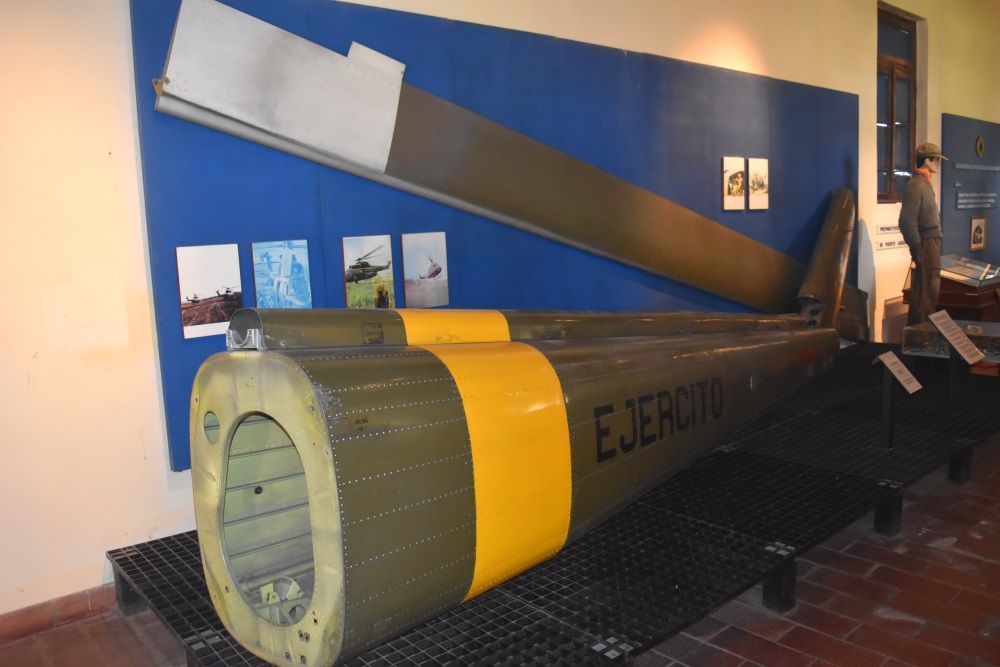 Next, some tanks. |
|
|
|
Post by nuuumannn on Jun 23, 2016 3:37:58 GMT 12
Continuing at the Museo Historico de la Ejercito, these Shermans are within a former stables that housed the horses that were part of the infantry division that was based there and is now part of the museum. 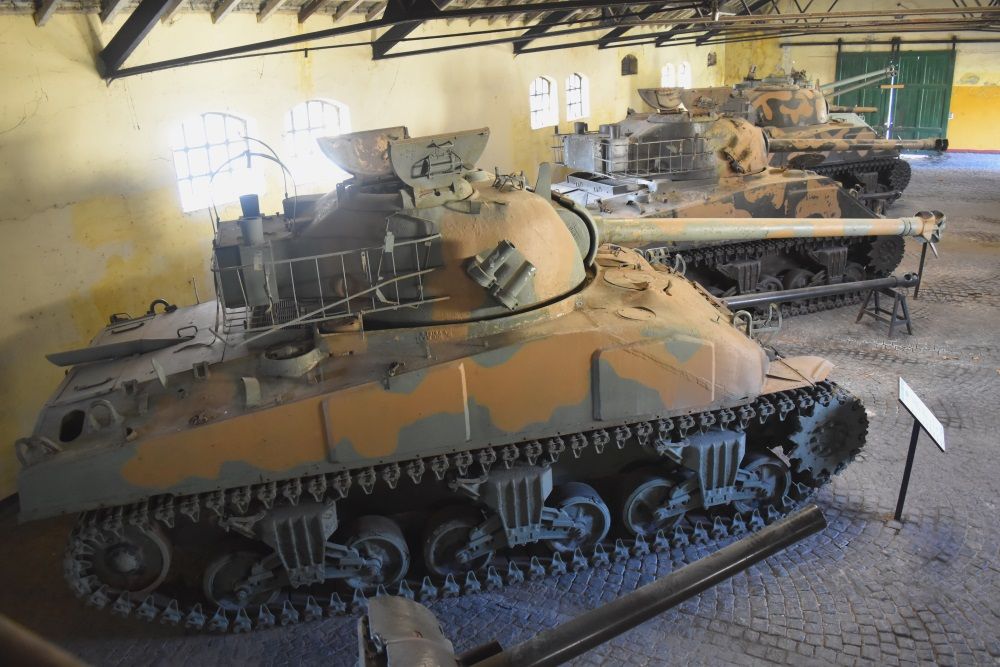 There are a number of vehicles dotted around the compound and I was given permission to photograph them, which I was told was unusual since people wandering round a military facility with a camera was unheard of, although by this stage I had become something of a minor celebrity at the base! We were joined on the tour by a senior officer who could speak english who wished to discuss the Falklands war, since his boss, the museum manager was in an artillery unit on the Falklands - he wasn't there the day of my visit - and he wanted my thoughts on the campaign, being a foreigner. We had a long and interesting discussion in the section of the museum dedicated to the Malvinas campaign. An M113 APC. 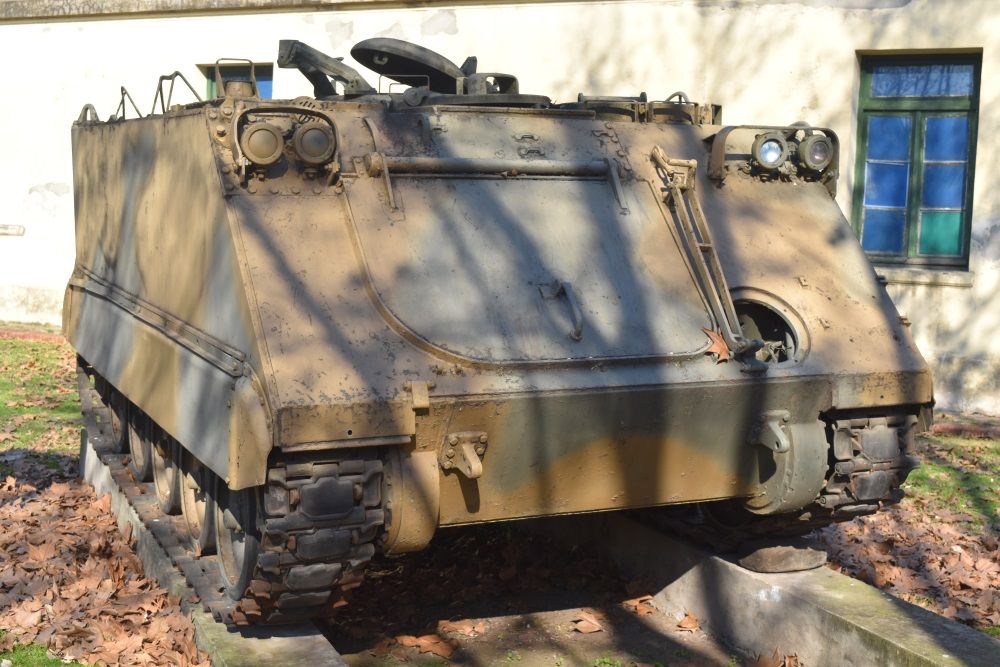 The tank that replaced the Sherman in the Argentine armoured division was the TAM, or Tanque Argentino Mediano. 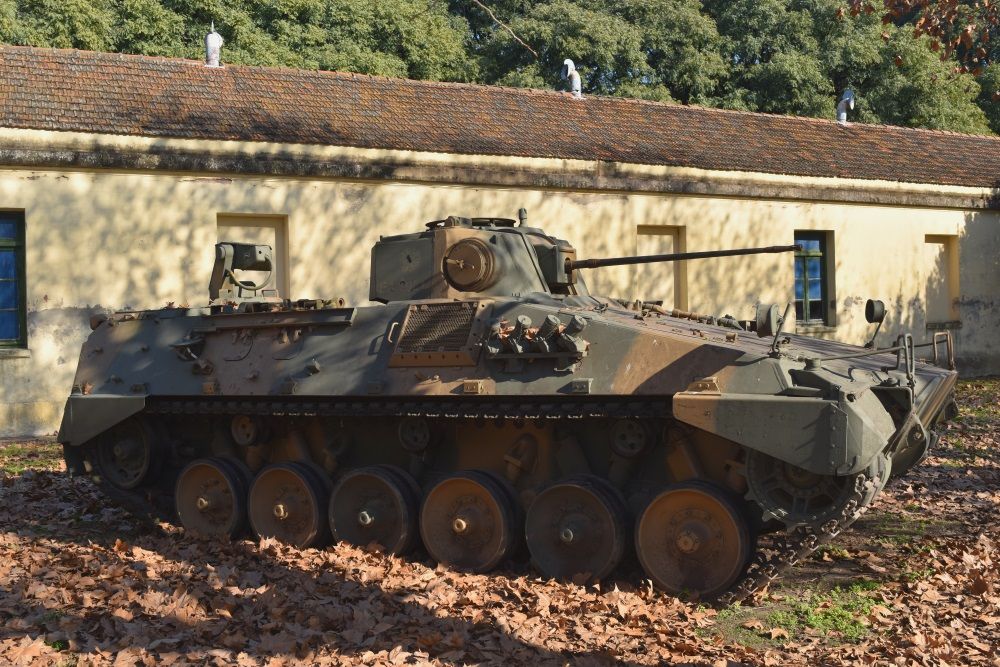 An AMX-13. 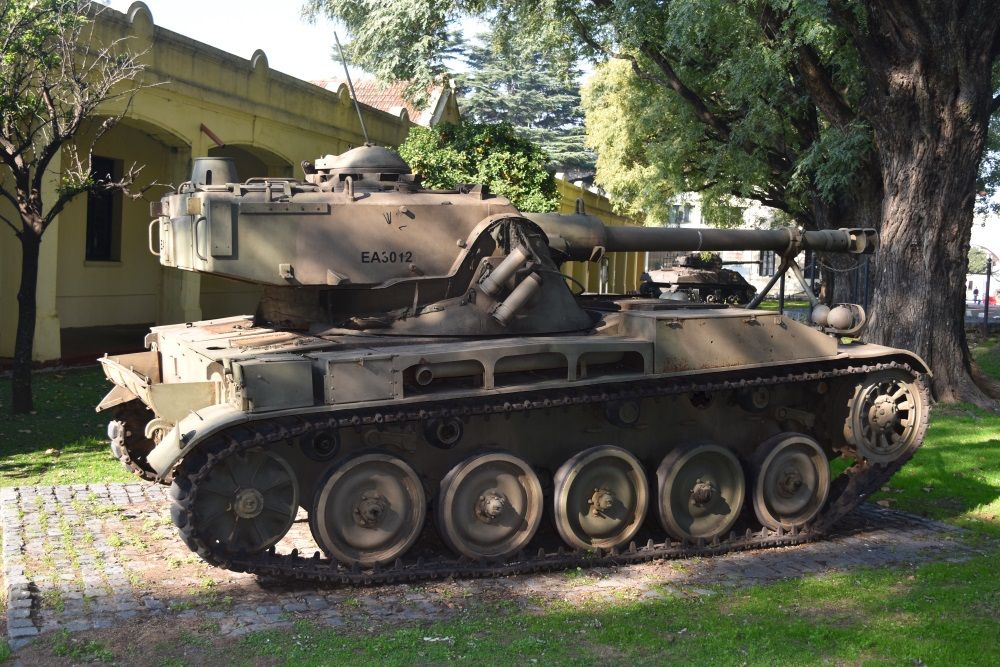 A very cool looking M-7 priest. 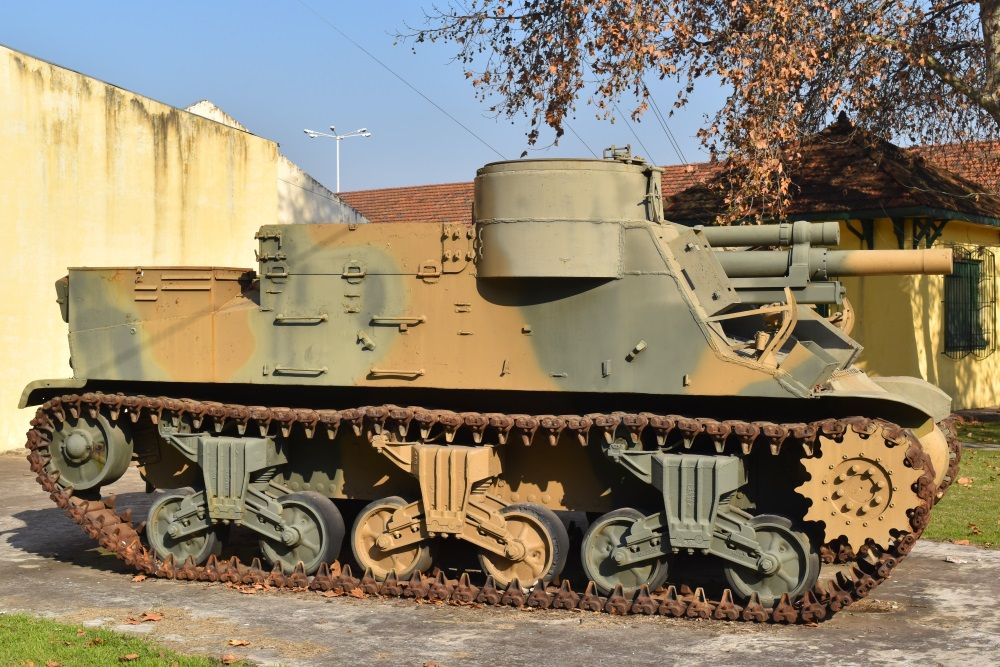 These were my two guides for the day, Laura and Cecilia. 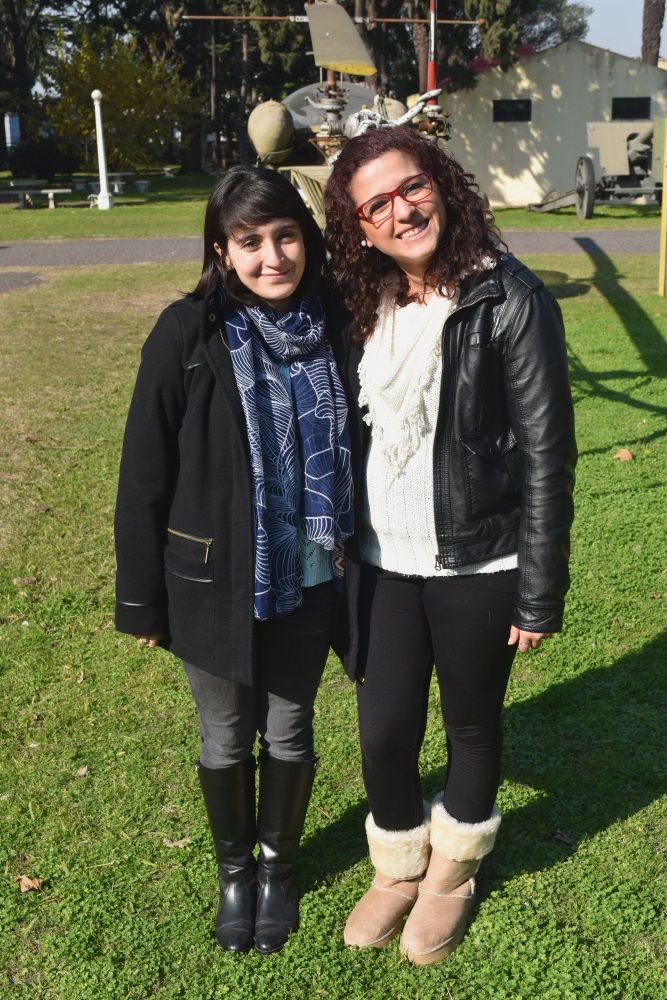 Lastly, a train journey to lovely Tigre on the Rio Parana delta and the Museo Naval de la Nacion, where there are lots of ship based artillery pieces and three rather weather worn airframes. An SNJ-4. 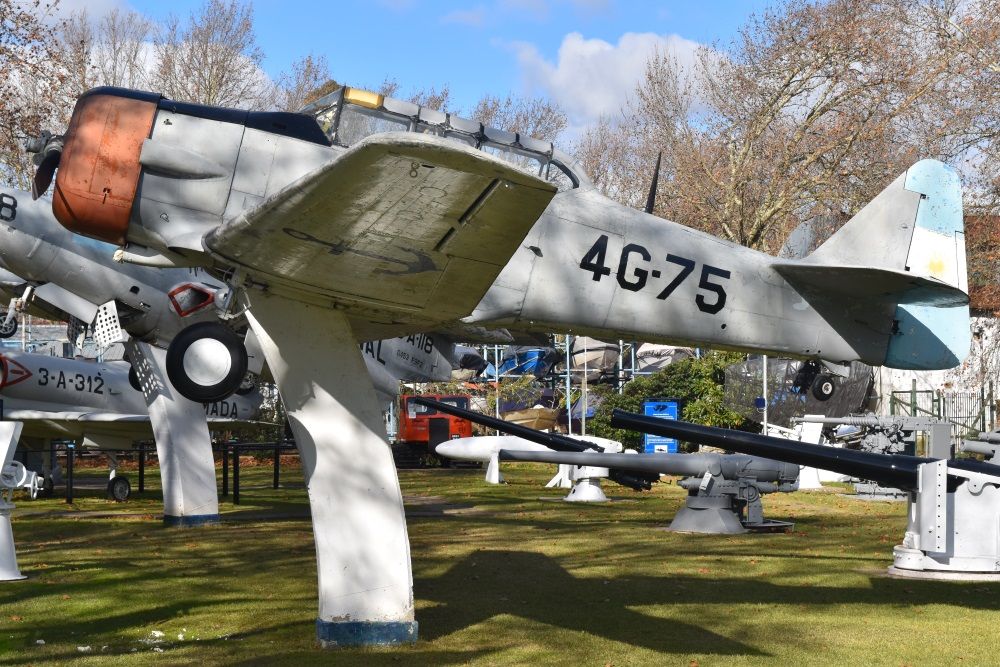 An F9F-2; Argentina was the only foreign operator of the Panther, of which they had 28 ex-USN examples, although 24 entered service. Although carrier aircraft, the ARA Independencia, formerly HMS then HMCS Warrior's catapult was not considered powerful enough to launch the aircraft, so they were land based. They went to war during the naval revolt of 1963 surrounding political divisions within the military government that had overthrown Juan Peron, where they were operated against armoured elements of the Ejercito. One Panther was shot down in the fighting. Armada SNJs and F4Us were also used in combat. en.wikipedia.org/wiki/1963_Argentine_Navy_Revolt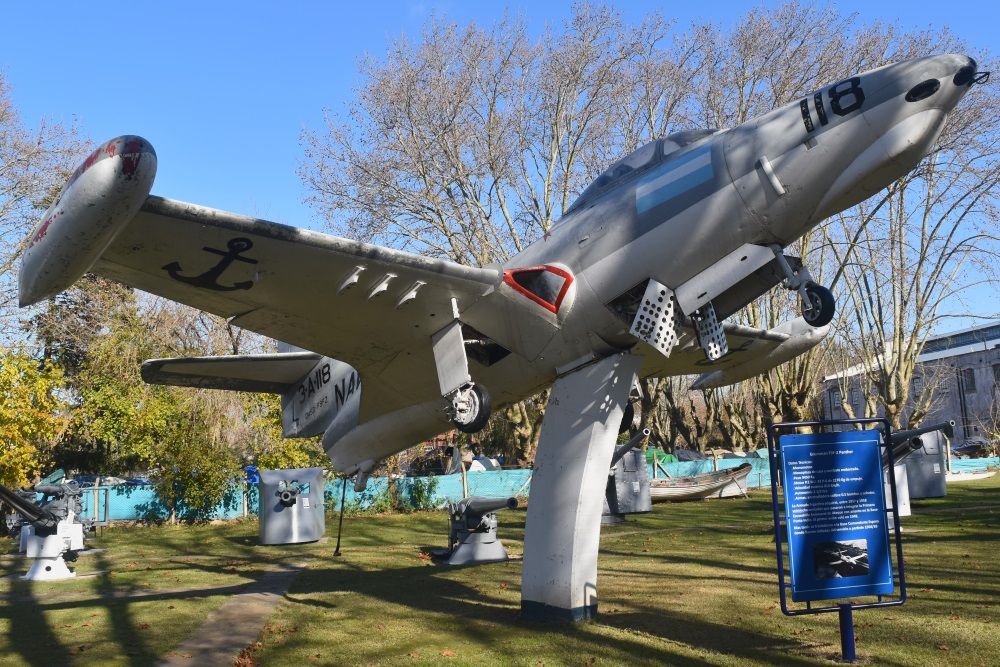 This is an ex-USN A-4B donated by the US DoD disguised as an Armada A-4Q. 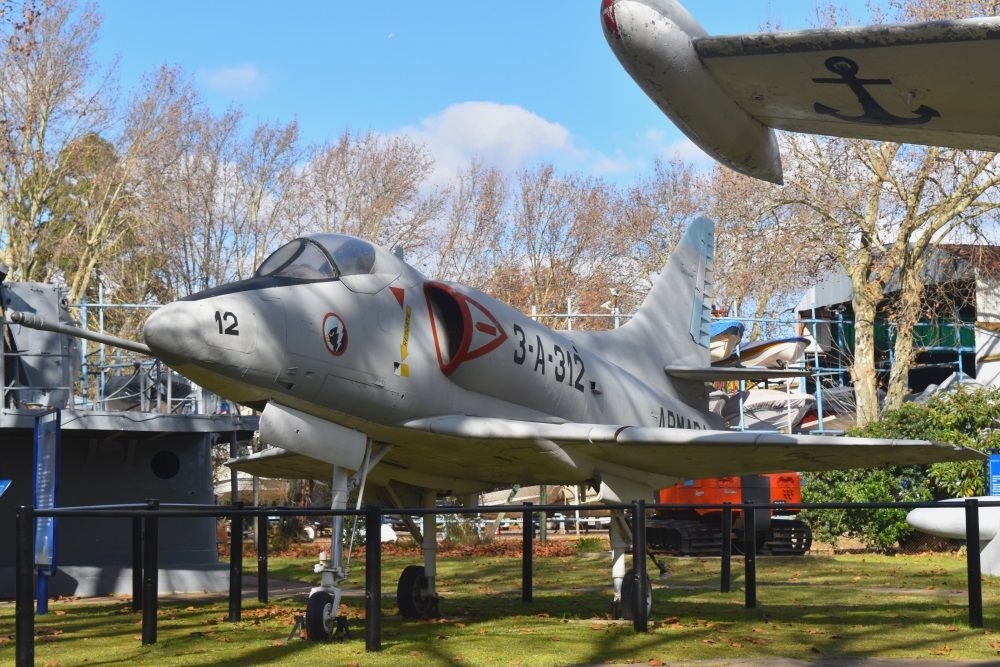 Next, a boat ride across the Rio de la Plata to Uruguay. |
|
|
|
Post by kiwithrottlejockey on Jun 23, 2016 12:15:43 GMT 12
With regards to the Falklands War, I've got a fabulous book called “ Wings of the Malvinas — The Argentine Air War over the Falklands” by Santiago Rivas. The book, which was published in 2010 and reprinted in 2013, looks at the air war from the Argentine perspective. It is obvious that a lot of research has gone into this lavishly-illustrated book. I purchased my copy from Capital Books in Wellington (I really miss that bookshop). The book is still readily available online, including from Amazon.com and Amazon.co.uk as well as via AbeBooks.com. |
|
|
|
Post by isc on Jun 23, 2016 22:20:59 GMT 12
Re the Bristol Freighter, it's a Mk1A, Argentina were among the first to receive the type, so yes it's an old one.
When I saw the Pulqui II, I thought "MIG 15", was Kurt Tank also employed by the Russians?
isc
|
|
|
|
Post by baronbeeza on Jun 23, 2016 23:13:22 GMT 12
.... I thought "MIG 15", was Kurt Tank also employed by the Russians? isc Maybe not but he did have a fling with Iva Bewtikisintel.....  |
|
|
|
Post by nuuumannn on Jun 24, 2016 2:18:12 GMT 12
No, he wasn't, but this little aircraft resembles the designs he toyed with during the war, most notably the Ta 183, which the Pulqui II was derived from, more so than the MiG-15; this is the Lavochkin La-15, which you can see the similarities to the Pulqui II with its high wing and high set tailplane, whereas the MiG has a mid set wing and tailplane. Despite the belief that the Russians weren't capable of original thought when it came to post war aircraft, there's no evidence that the MiG-15 was a deliberate copy based on German research; in fact, almost all of that generation of jet share the same layout; the Dassault Ouragan, the F-86 (which did benefit from German research), and the SAAB J-29 Tunnan, for example.  |
|
|
|
Post by nuuumannn on Jun 24, 2016 10:55:06 GMT 12
Anyway, Uruguay is a couple of hour ferry trip across the Rio de La Plata, or River Plate from Argentina. To get to Uruguay's capital Montevideo, you can go direct from Buenos Aires, which takes around 3 hours, or you can go via Colonia del Sacramento, or just 'Colonia', a former Portuguese colony whose cobbled boulevards have become the subject of photos by mobs of tourists the world over and a part of a World Heritage site. Anyway, airframe wise, there isn't a whole lot (in fact, you could say that about Montevideo as a whole!), all of which can be found around Aeropuerto Carrasco, the country's primary international airport. The new terminal is rather flash, but (in common with the rest of Montevideo) the chronic litter problem kind of spoils the whole effect.  Inside the big sweeping building are two historic airframes, both advertising the nearby aviation museum; an SG-38, 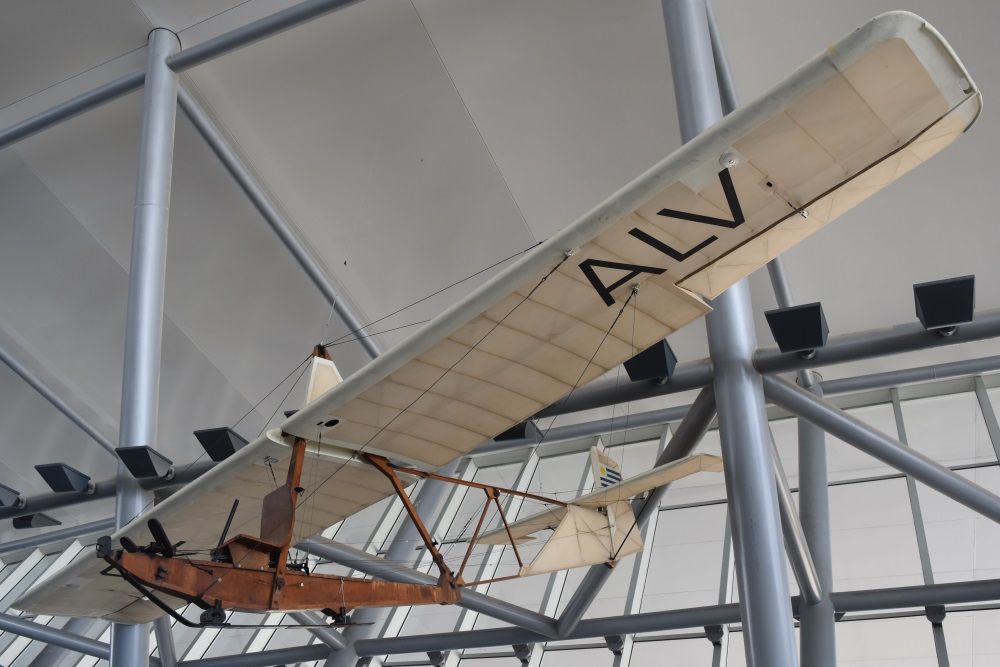 ...and this thing, which originally I thought was a French Borel Monoplane; a pioneer naval machine that saw early use in the Great War as a ship based float plane with the French and British navies... 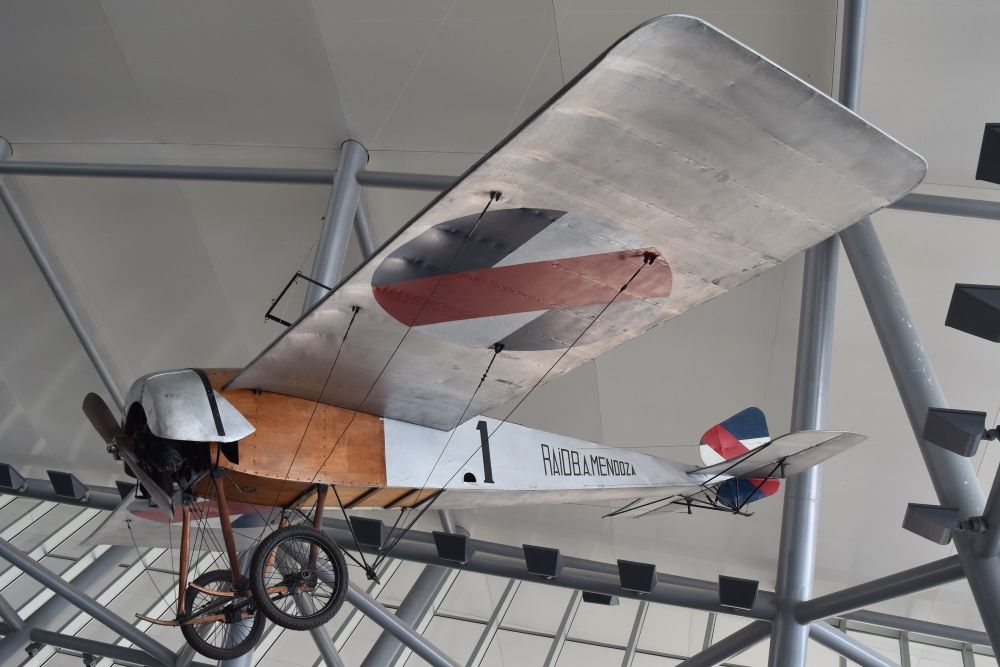 It's actually a Castaibert; the very first aeroplane manufactured in Argentina was designed by French engineer Paul 'Pablo' Castaibert and were characterised by the amount of horsepower each of the rotary engines put out. A total of 21 were built. Uruguay received a small number in 1913 as the first military aircraft in the country. This one is the machine that was flown on one of a series of long distance flights, to Mendoza in Argentina. About a kilometre's walk from the terminal is the entrance to the military base, which serves as the training facility for the Uruguayan air force and home to 1 Brigada Aerea. Outside the entrance behind a fence are three airframes, which, despite the fact that I was photographing them from a public road, Uruguayan air force personnel are a little sensitive about having them photographed and I was shooed away!  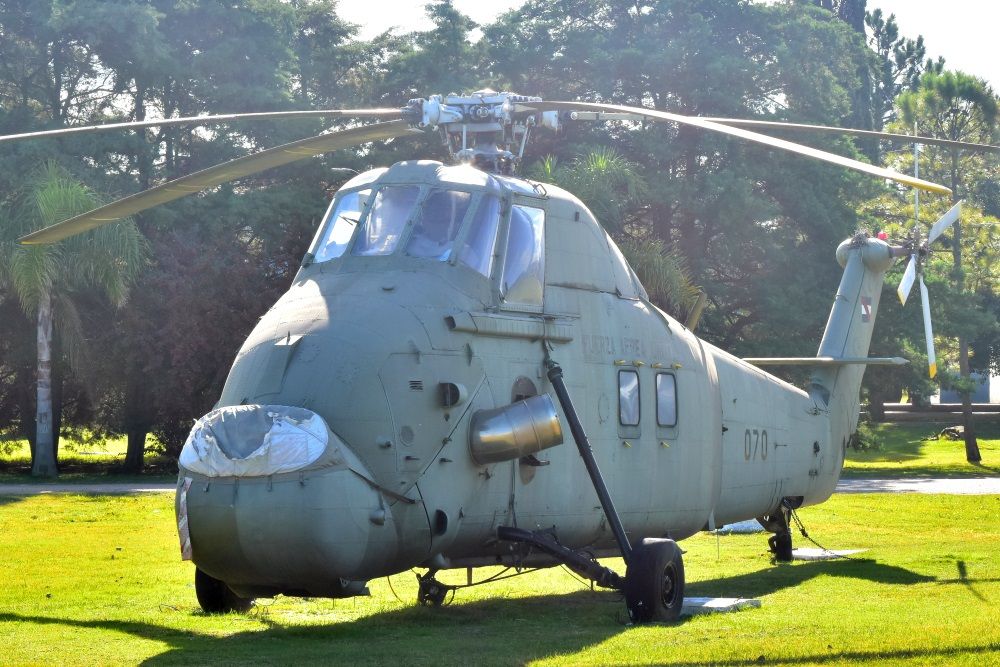 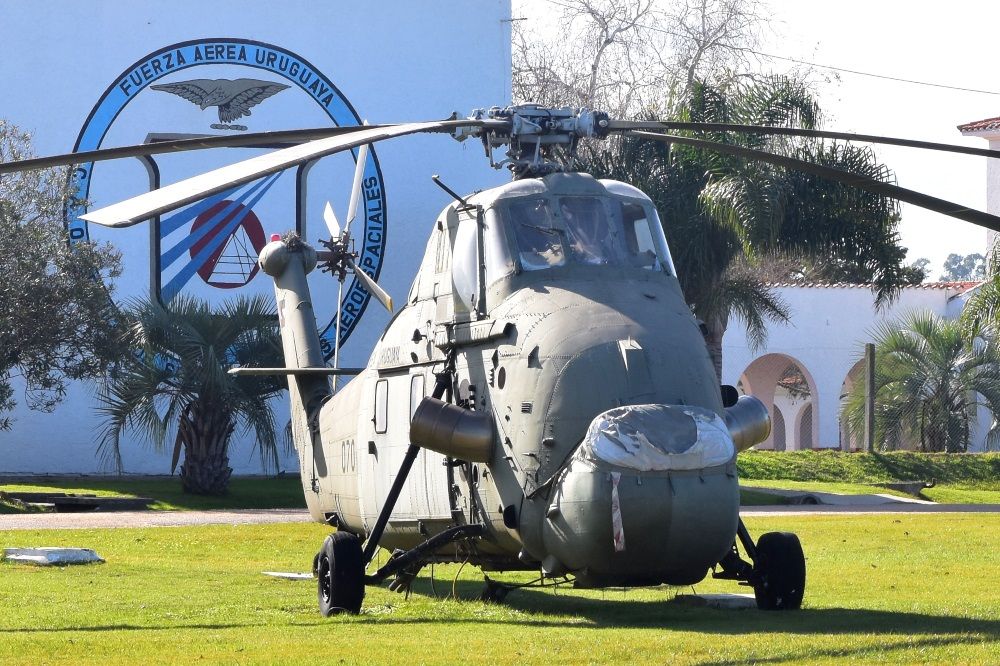 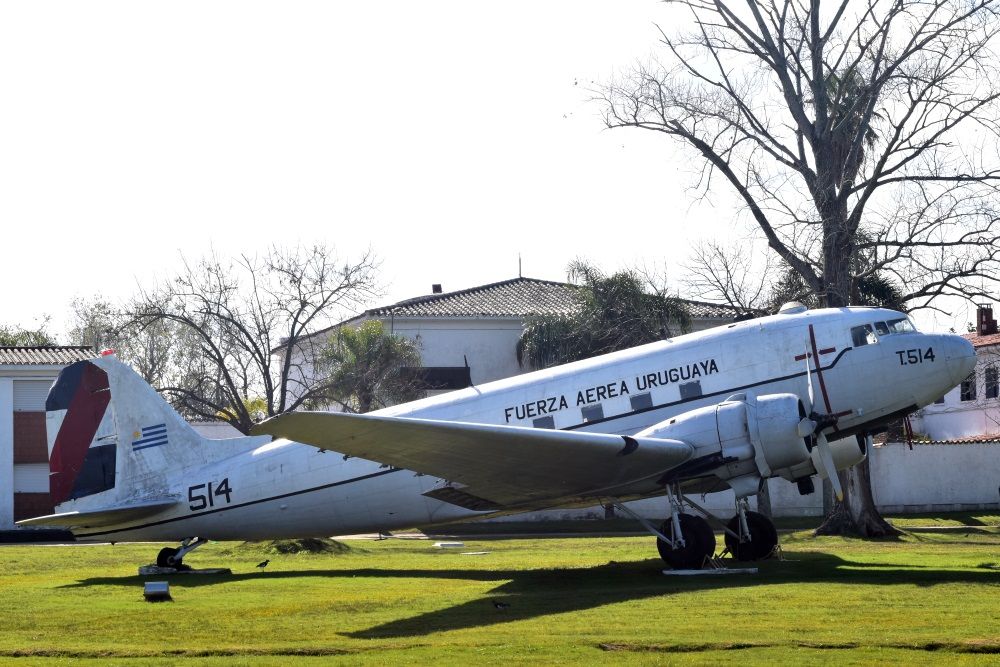  Next, the small, but interesting Museo Aeronautico and the cleanest concrete floor in the whole of Montevideo. |
|
|
|
Post by nuuumannn on Jun 25, 2016 3:37:11 GMT 12
Although a thoroughly modern country, Uruguay is something of a back water in South America and despite possessing an aging military air arm, both Fuerza Aerea and Armada have been well supported over the years. Owing to human rights issues (yet another Latin American military dictatorship that brutally tortured and murdered its own citizens), the military air arms have struggled with re-equipment of late and the most modern combat aircraft in Uruguay is the Cessna A-37 Dragonfly. The Museo Aeronautico is located next to the entrance to Aeropuerto Carrasco and is a fine wee collection with interesting displays. Outside are these two; a Lockheed T-33 and a rather beat up Pluna DC-3. Pluna used to be Uruguay's national airline, and established South American routes in 1936, but after serious financial losses, in 2012 the government pulled the plug on the nationalised airline and its assets were sold off. It's sad to see this DC-3 in this state as the airline had a proud history and when it was moved to its current location it was intact and in good external condition. Now it just looks sad. 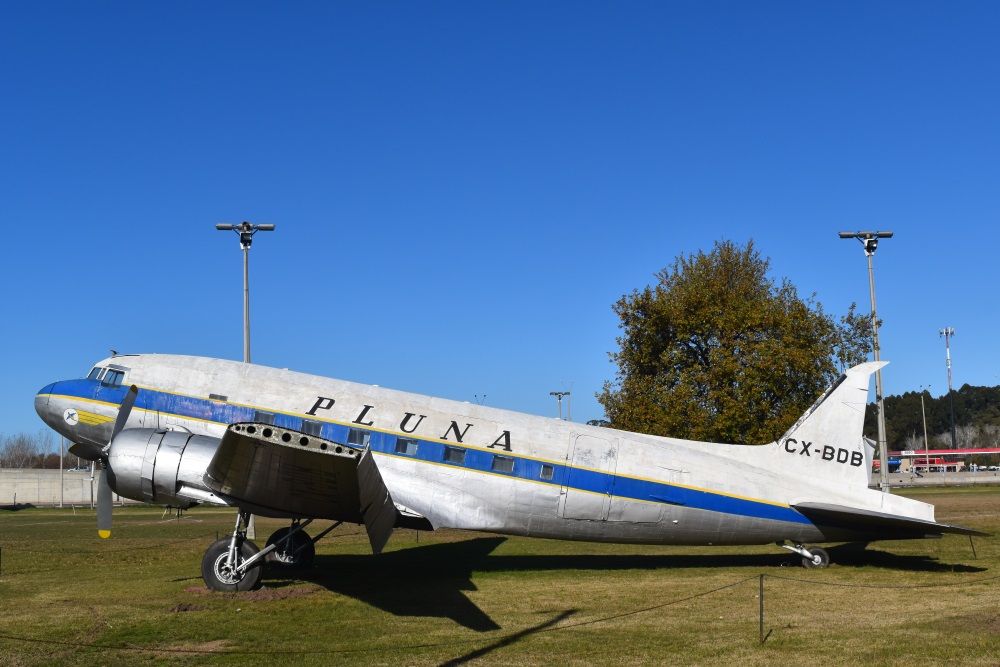 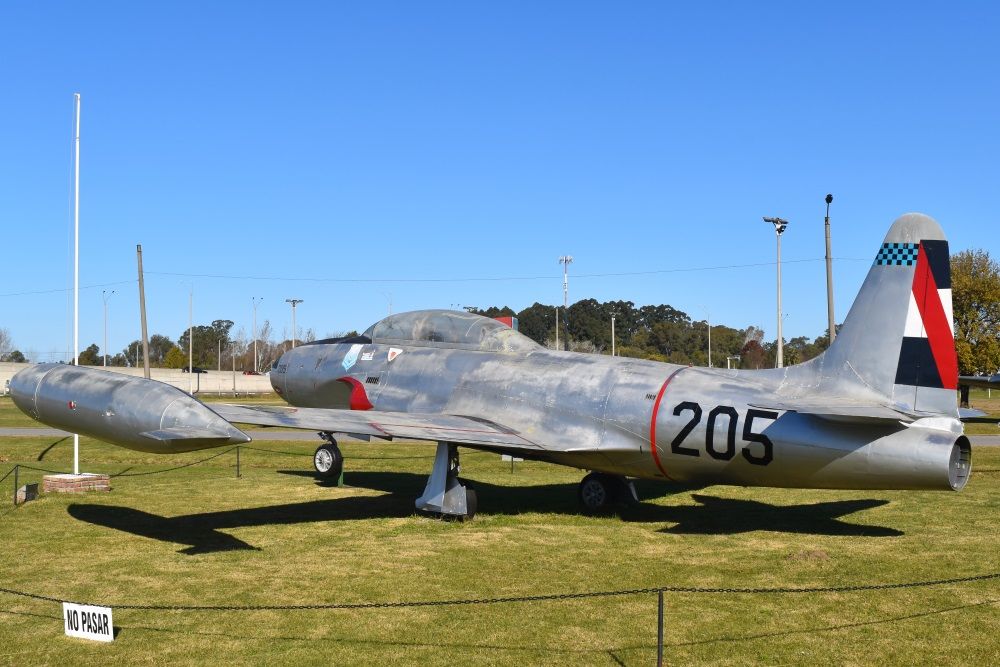 Inside a new purpose built building there are a number of well kept aircraft on the cleanest expanse of concrete I think I saw in Montevideo; the streets are littered with rubbish and dog sh*t and pavements are broken and chipped, causing unwary pedestrians to trip up and twist their ankles! Stinson Voyager; 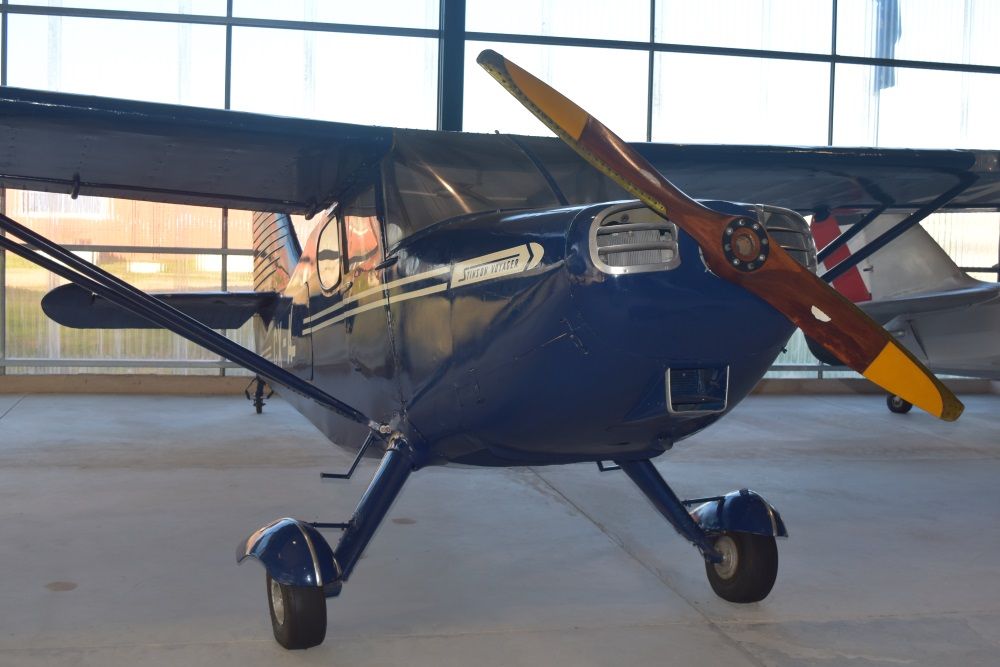 T-6D Texan; 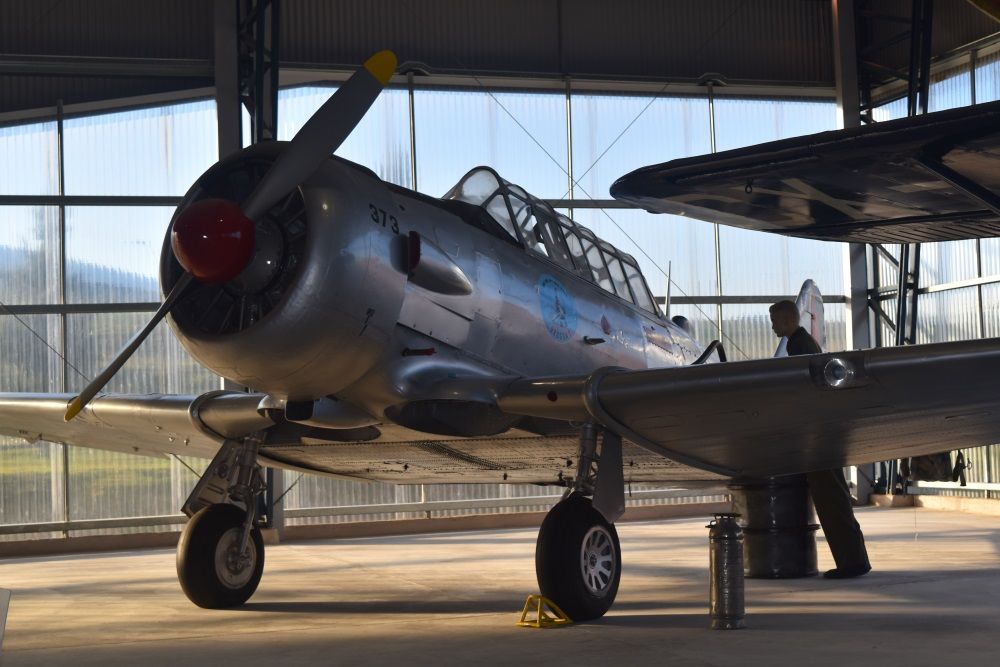 The mainstay of the Fuerza Aerea Uruguaya's fighter force for many years, an F-80C Shooting Star of which 17 were supplied to the FAU; 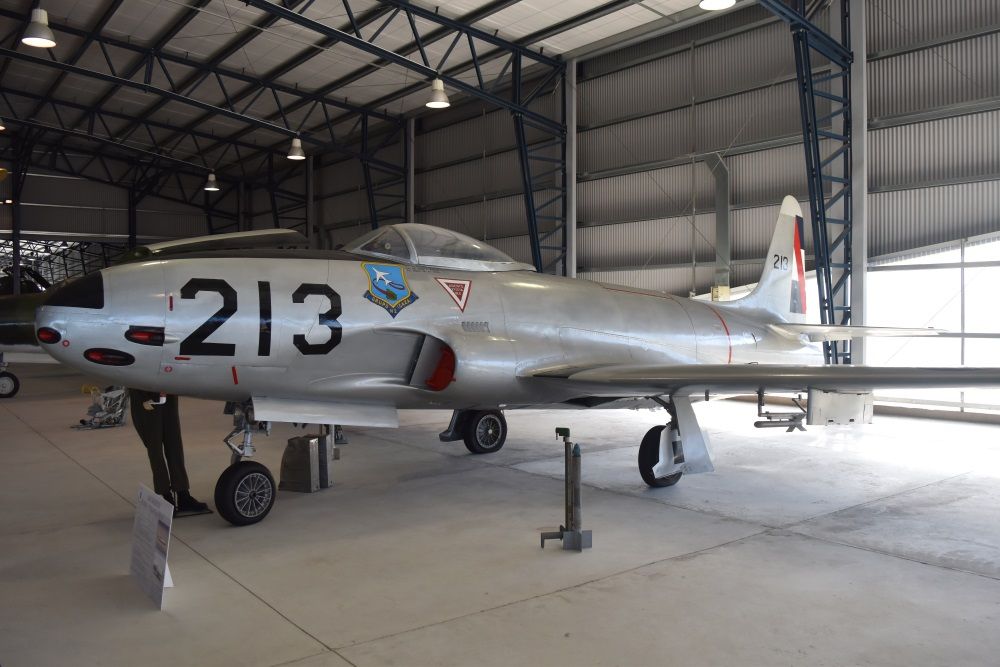 Another T-33, one of eight AT-33As supplied; 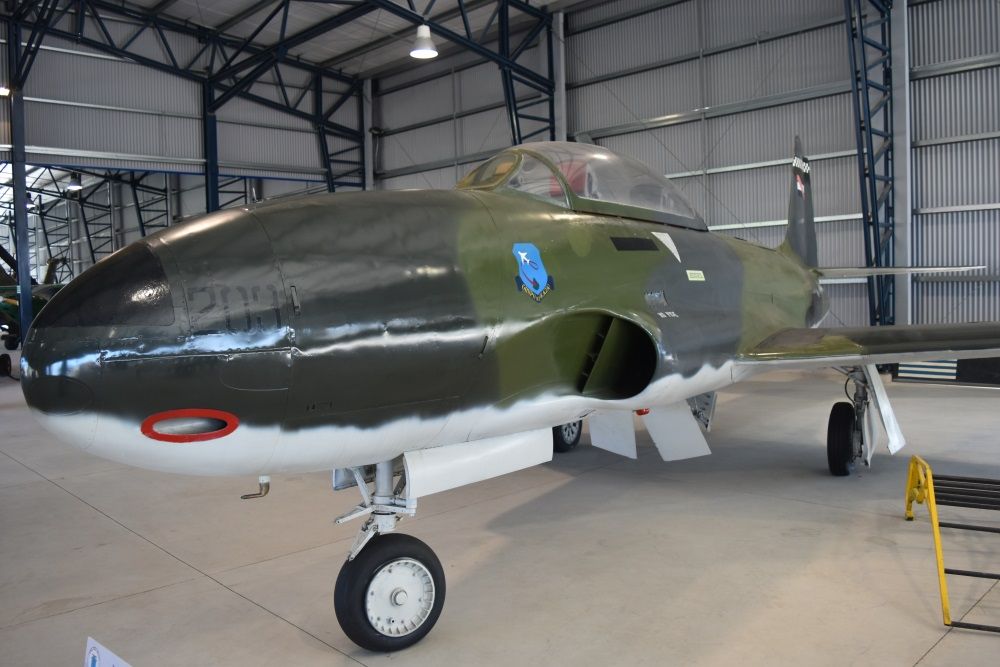 Beech T-34; the first examples of these were sought from the US civilian market to replace T-6s, but a batch were acquired from Davis Monthan, Arizona and the Spanish Air Force.  Former RAF Wessex HC.2 XR497 was one of 11 Wessexes operated by the FAU from 1997 to 2003. The one outside the military base was formerly XR522. 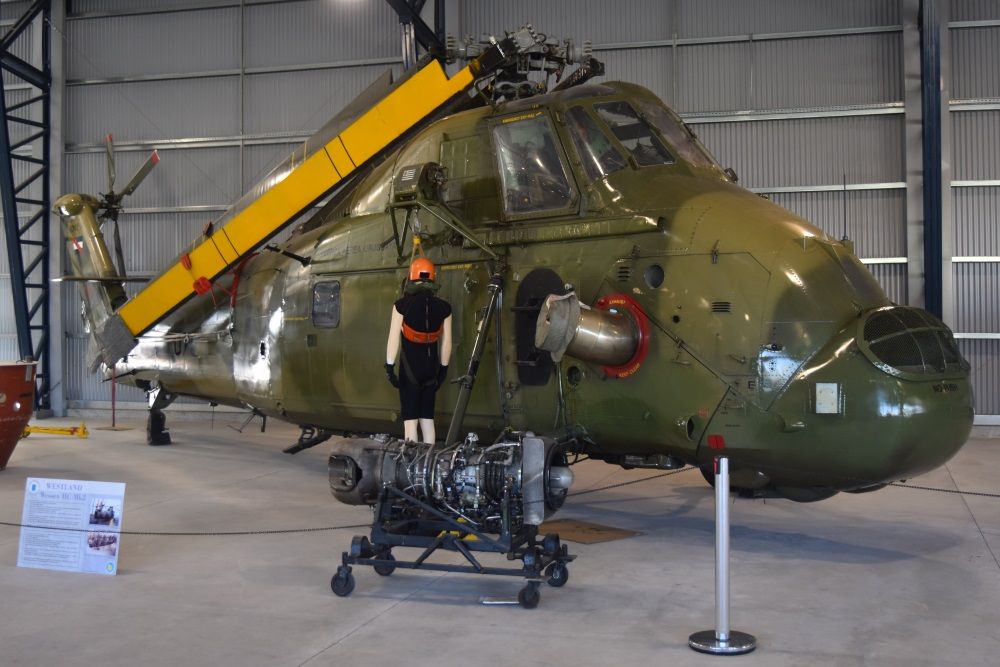 Two Hueys, a UH-1H and short fuselage UH-1B;  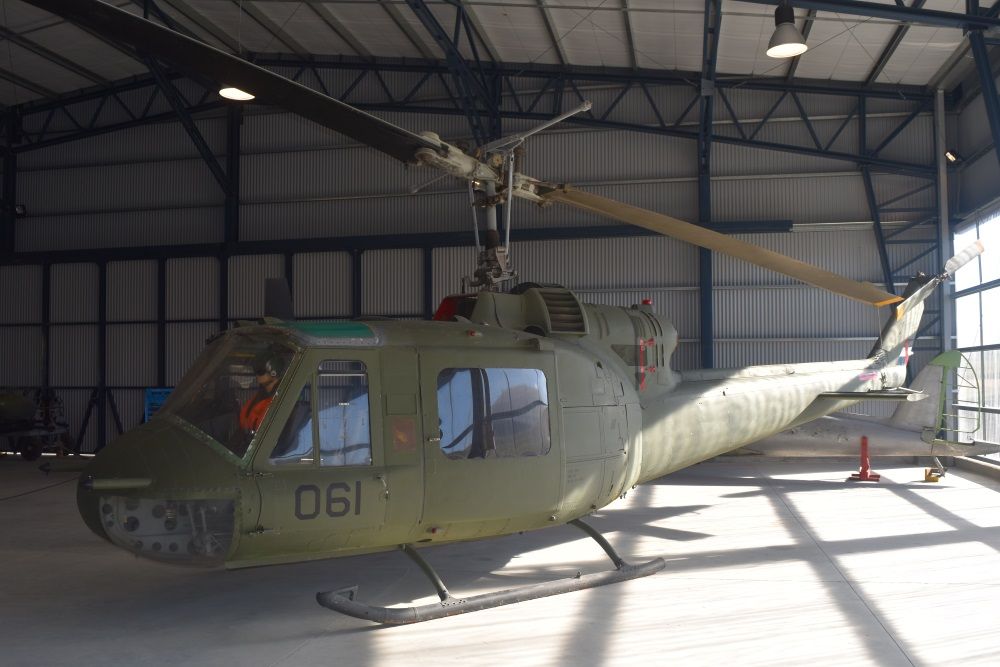 One of 11 A-37Bs supplied to Uruguay and its last combat jet; 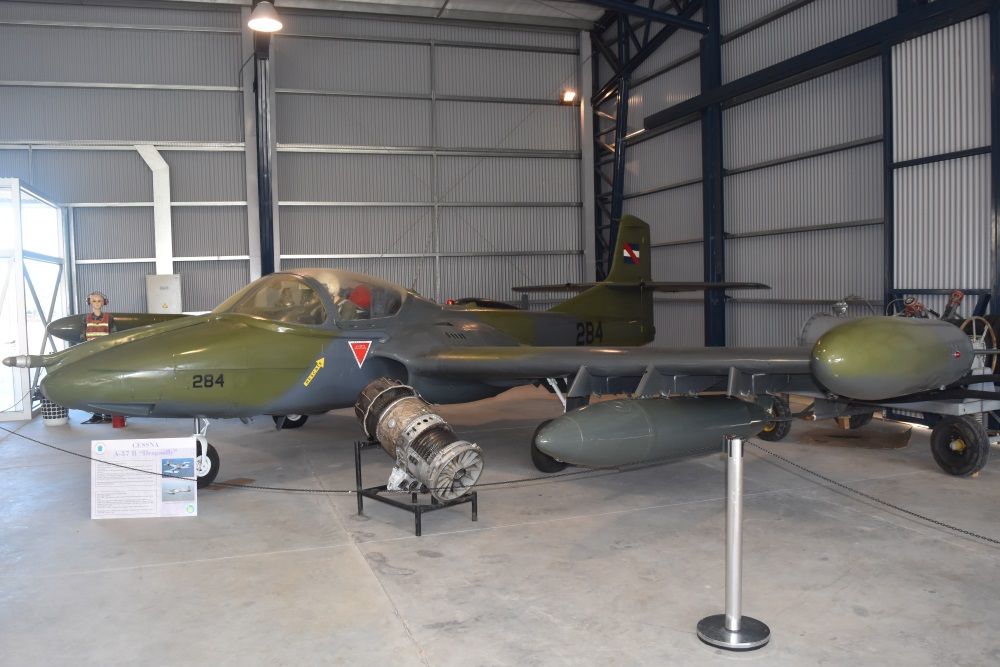 And finally, Chipmunk G-ANOW 'Urutau' was the first Chipmunk operated in Uruguay and conducted a tour of South America to encourage sales of the type. It was named 'Urutau' on arrival and became the property of the Director General of Civil Aviation and was registered as CX-BGH. The museum also holds CX-AVA, a former FAU airframe. 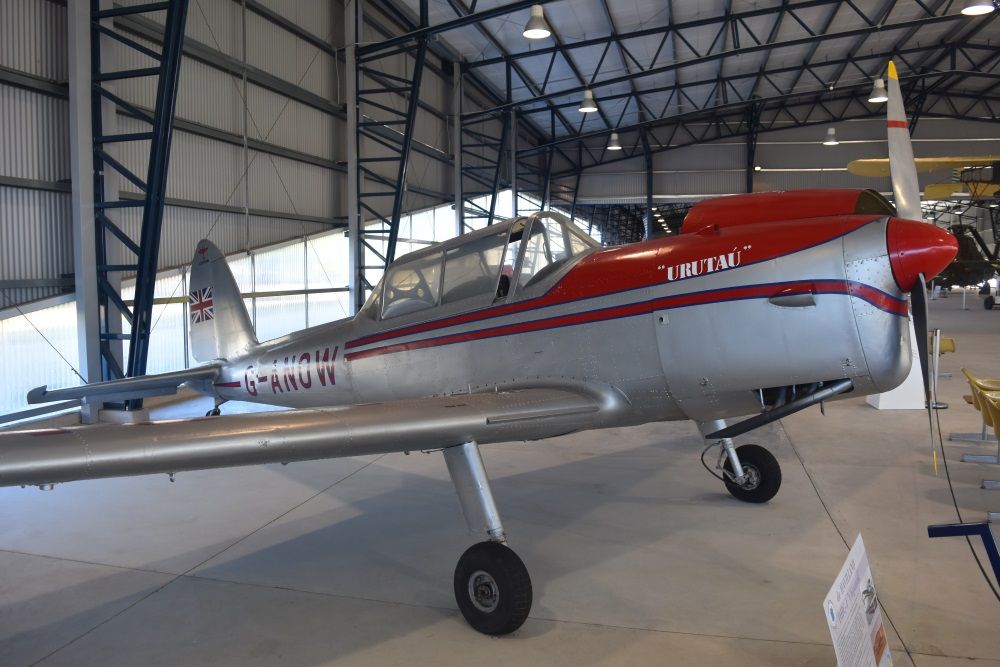 At another site undergoing restoration is a B-25 Mitchell, AT-11 Kansan, Lodestar and a rare Curtiss SNC-1 Falcon, which I was keen to photograph, but they are not able to be viewed by the public, unfortunately. |
|













































































